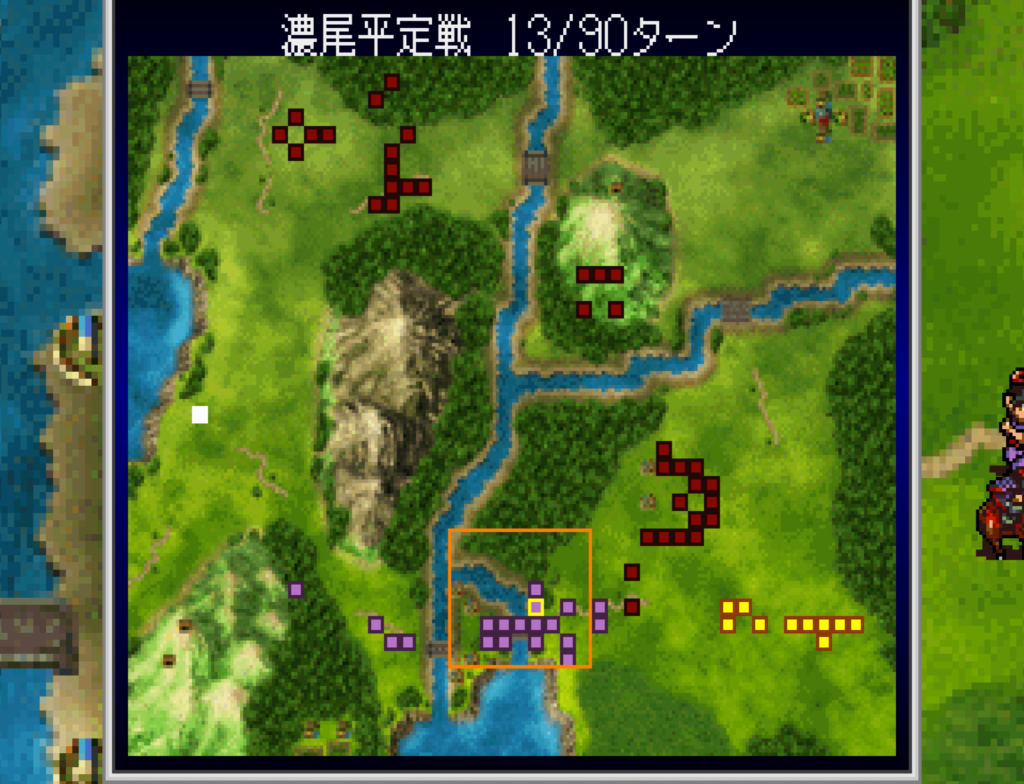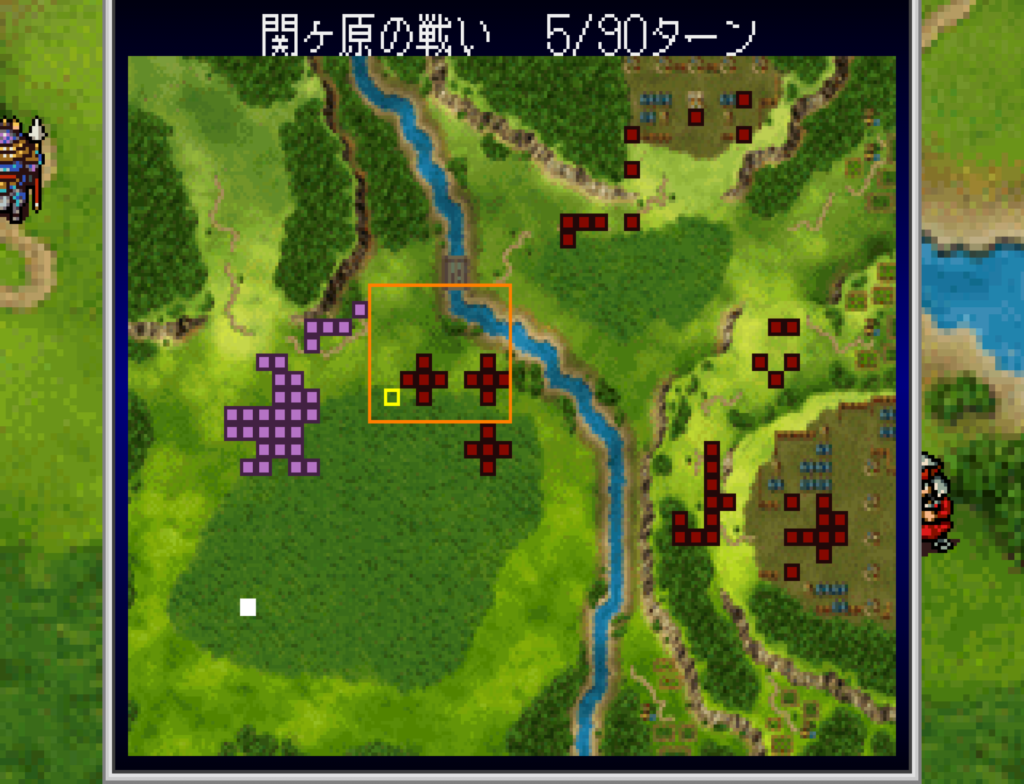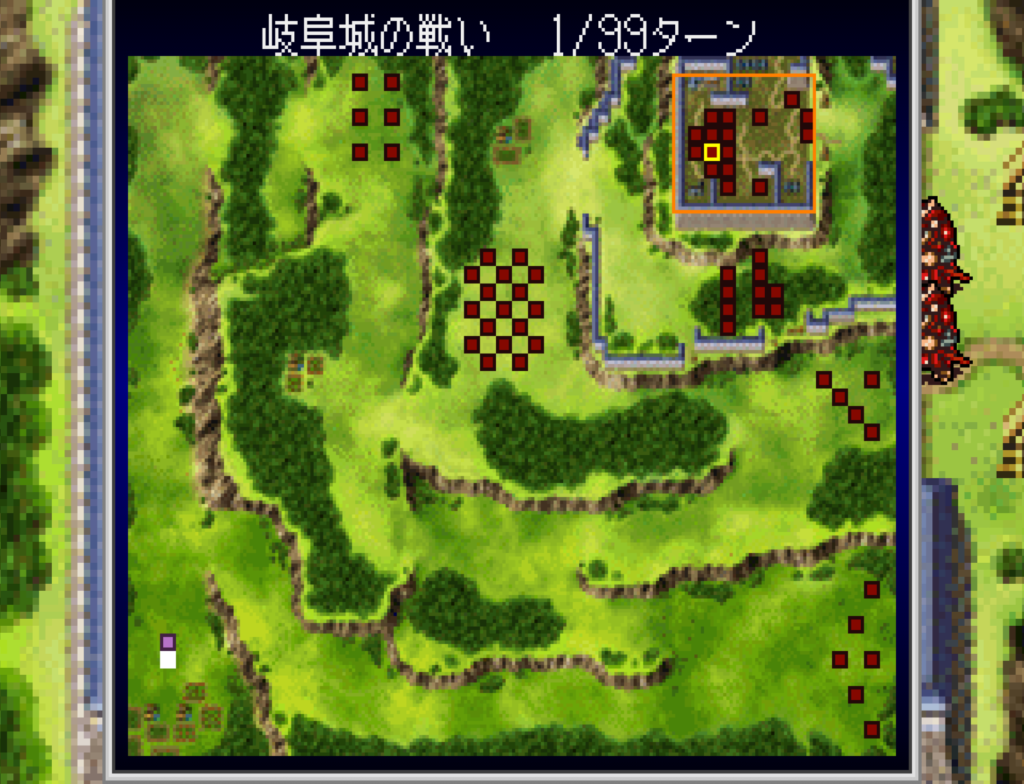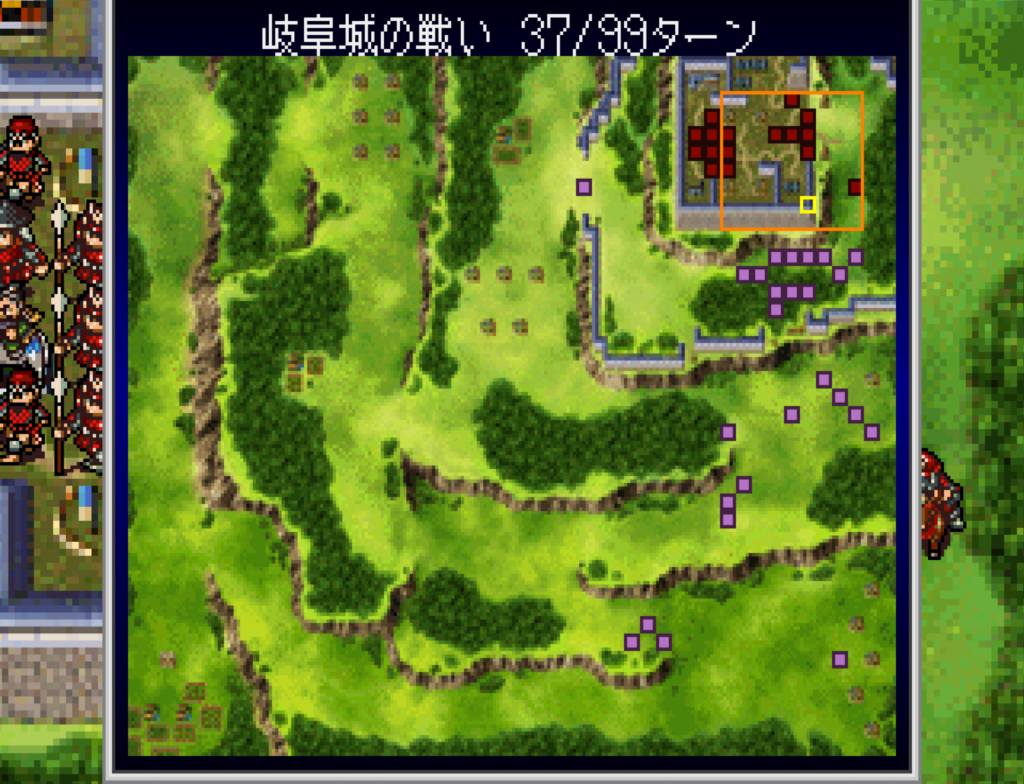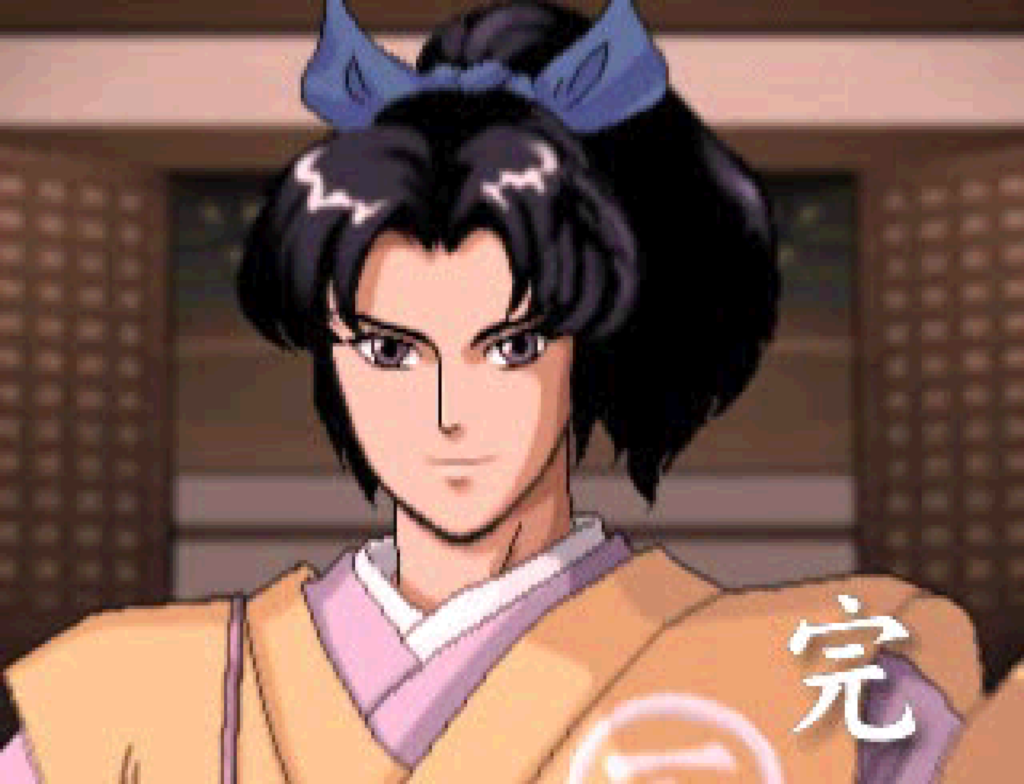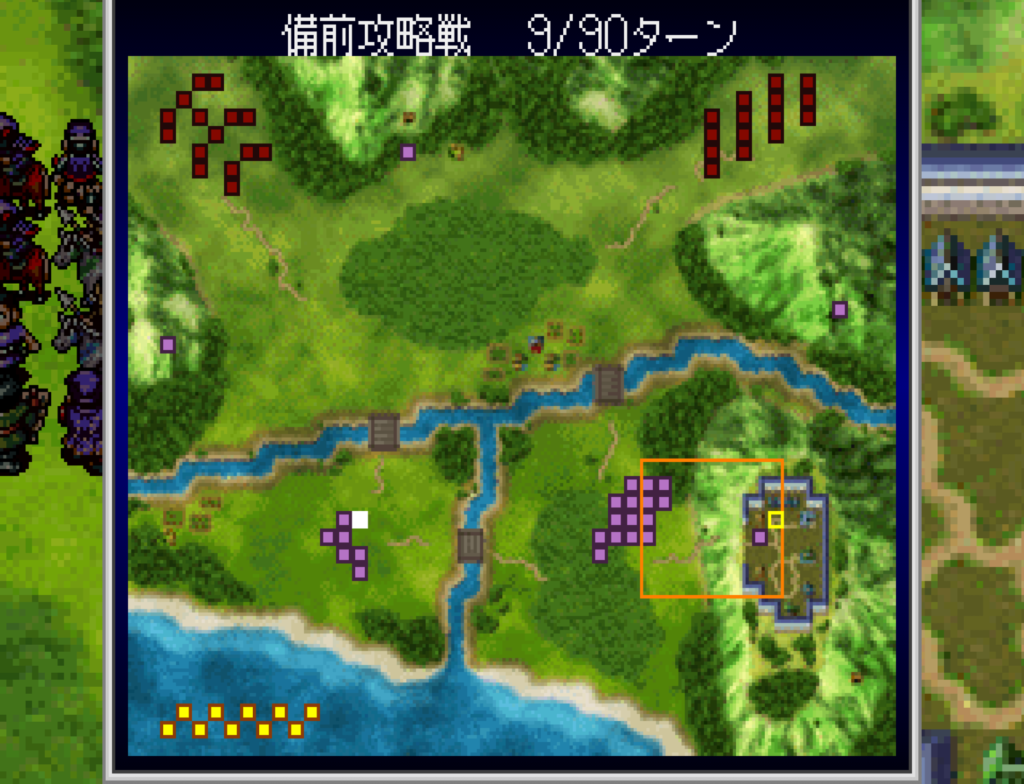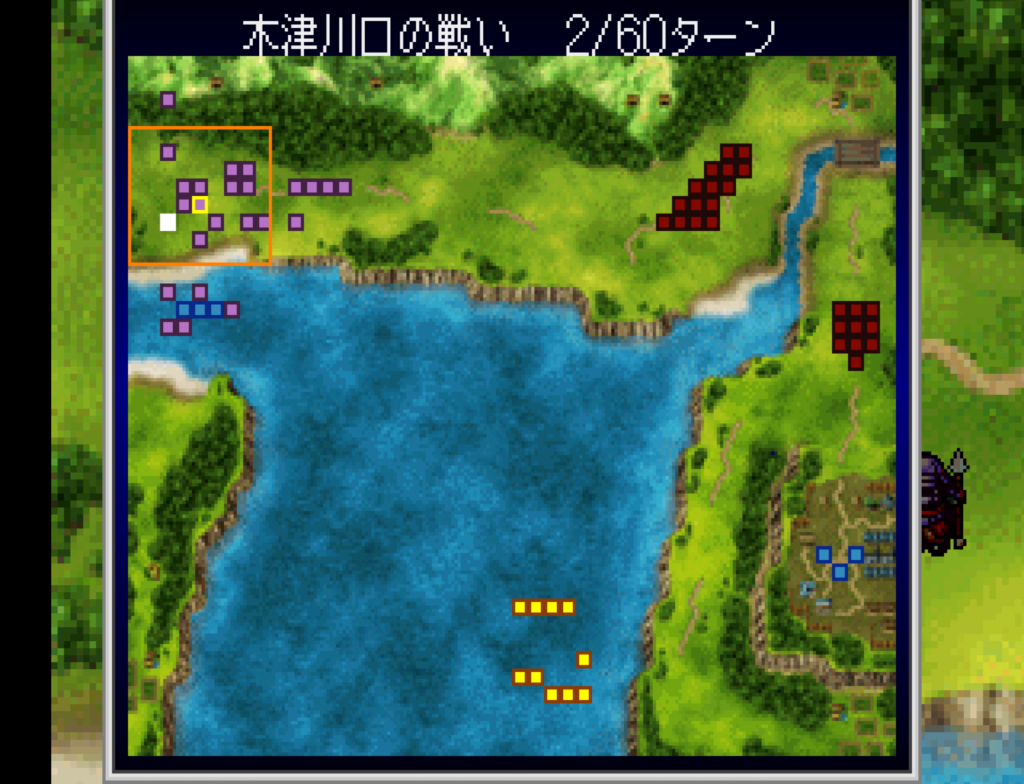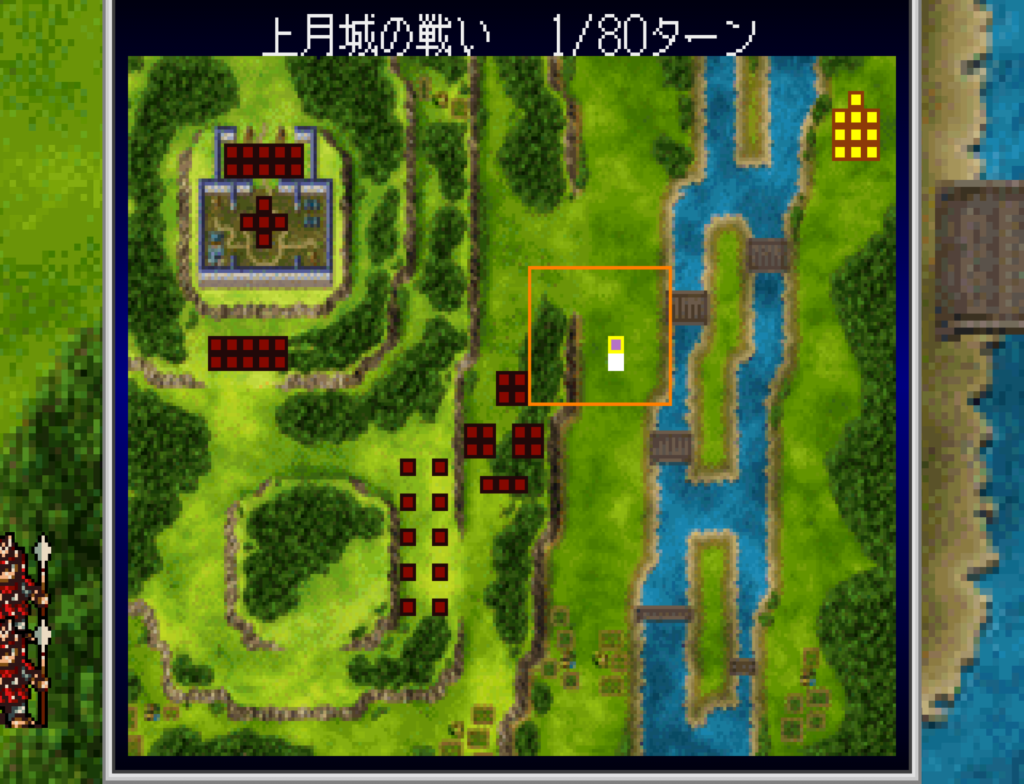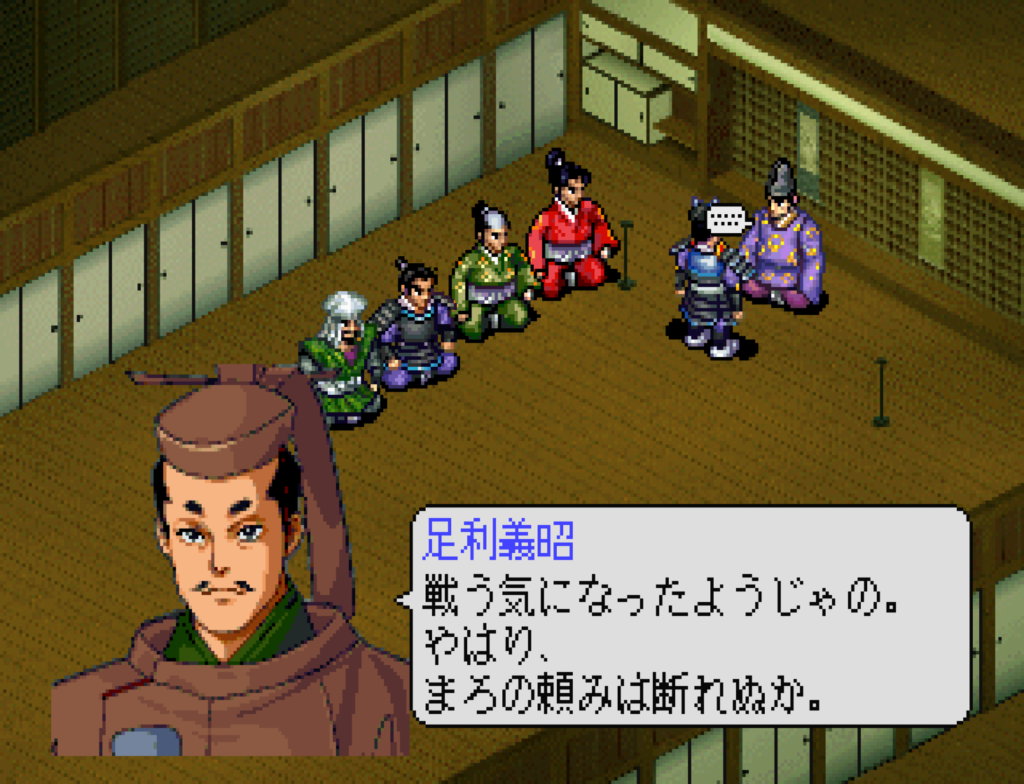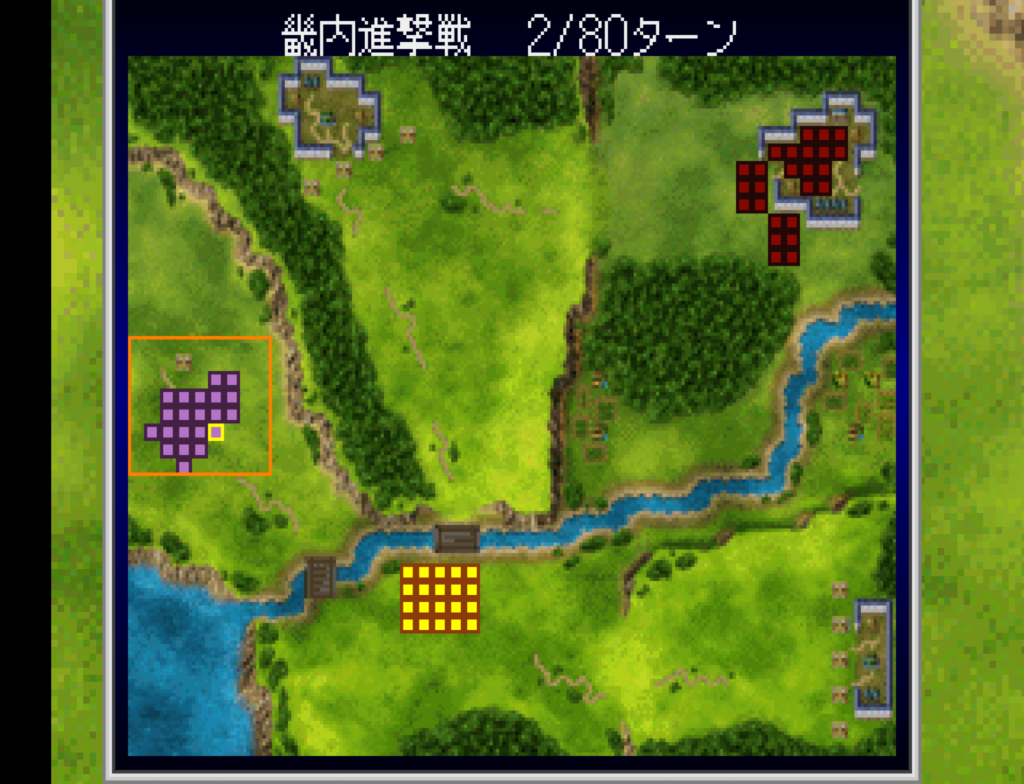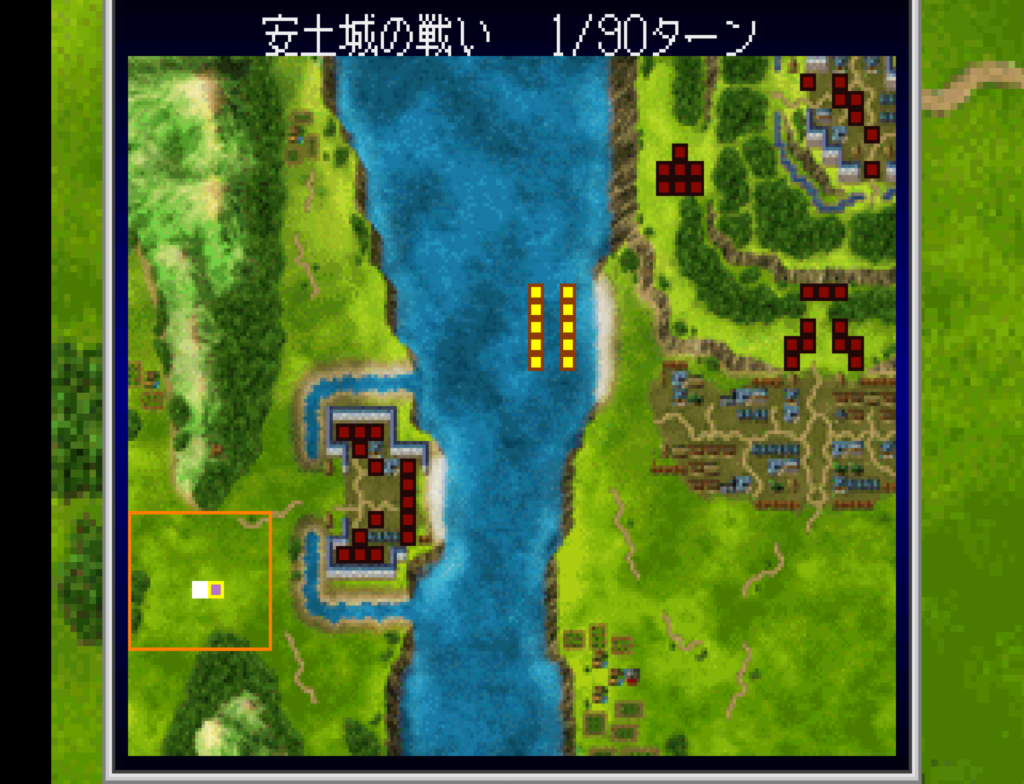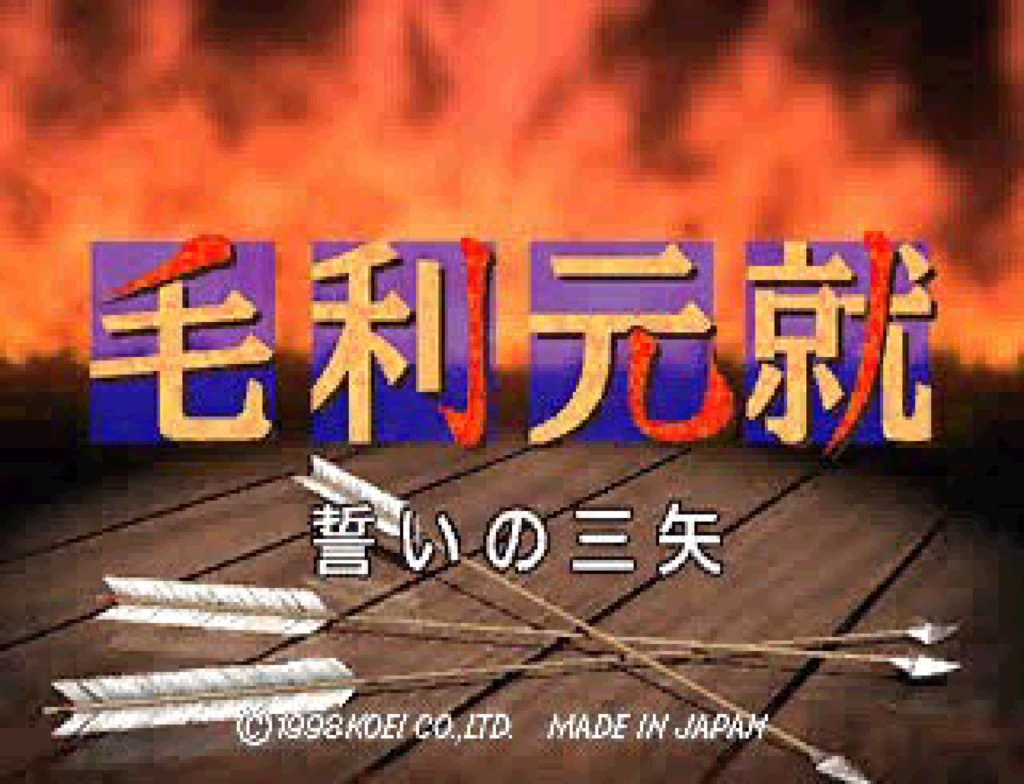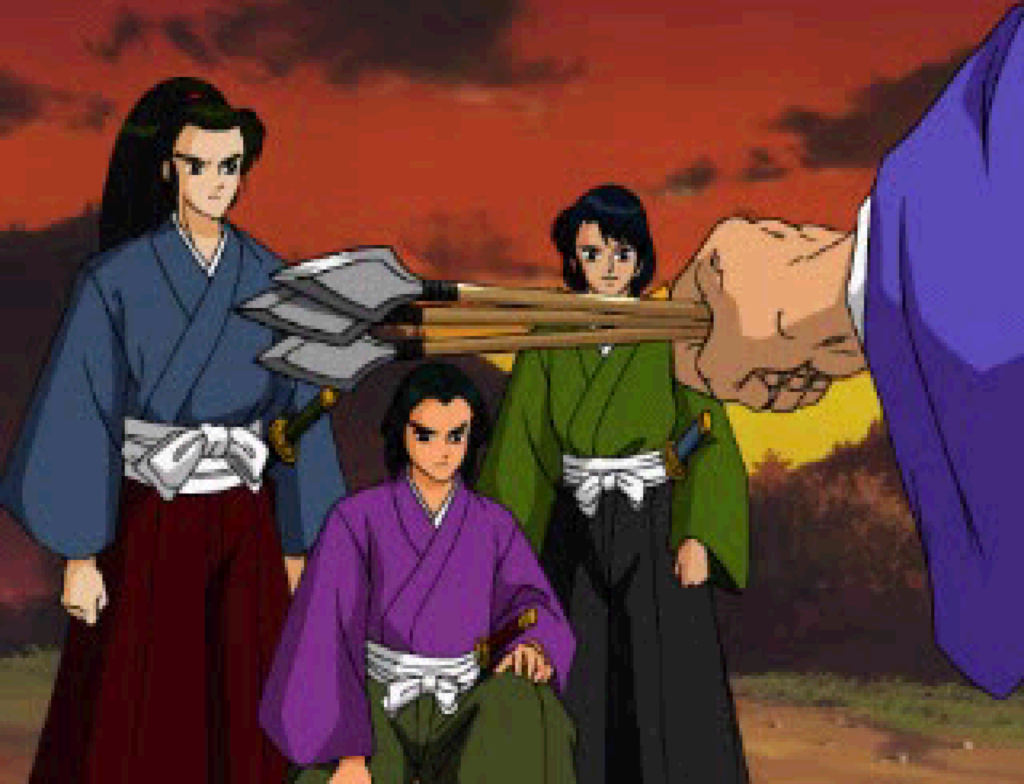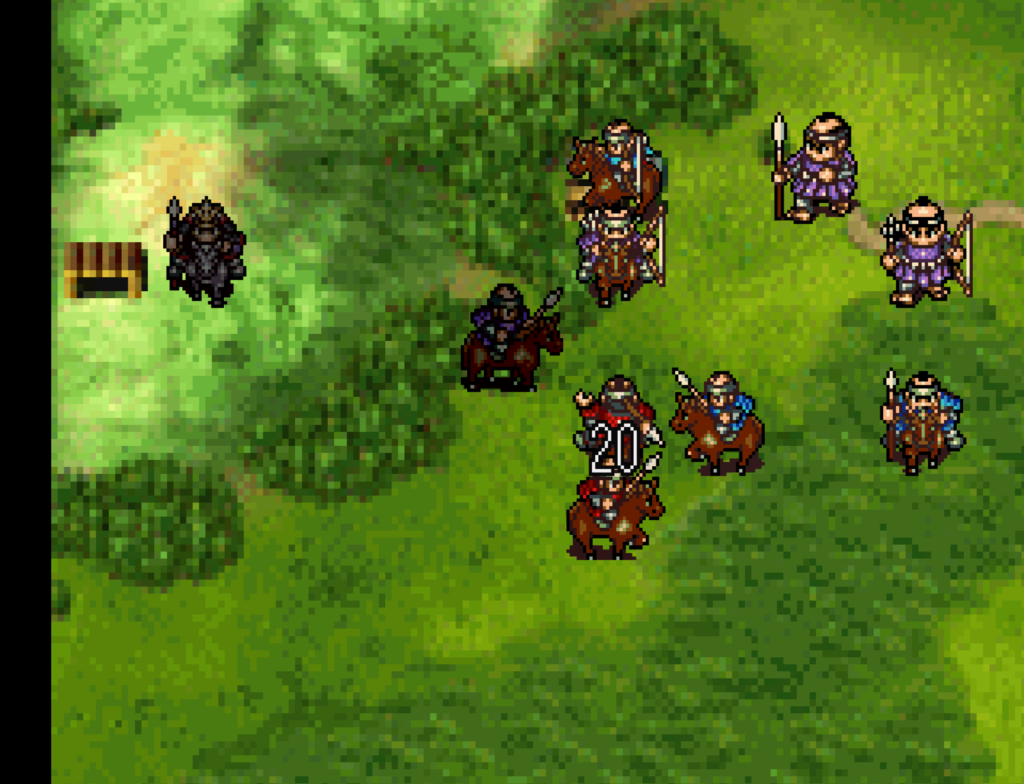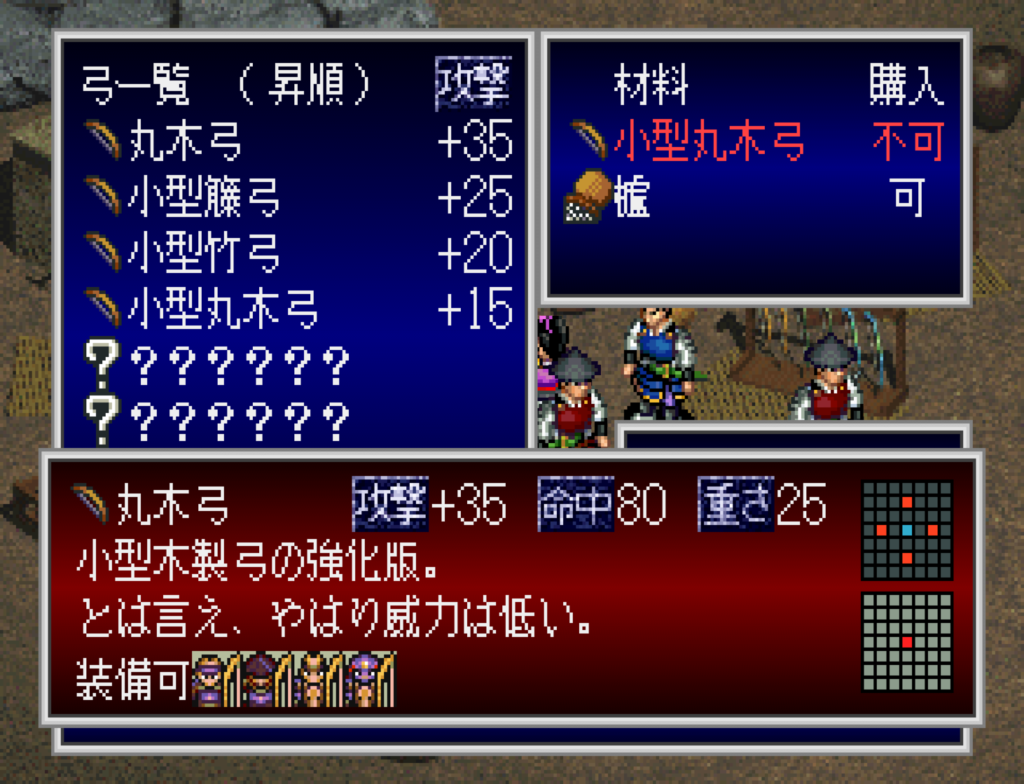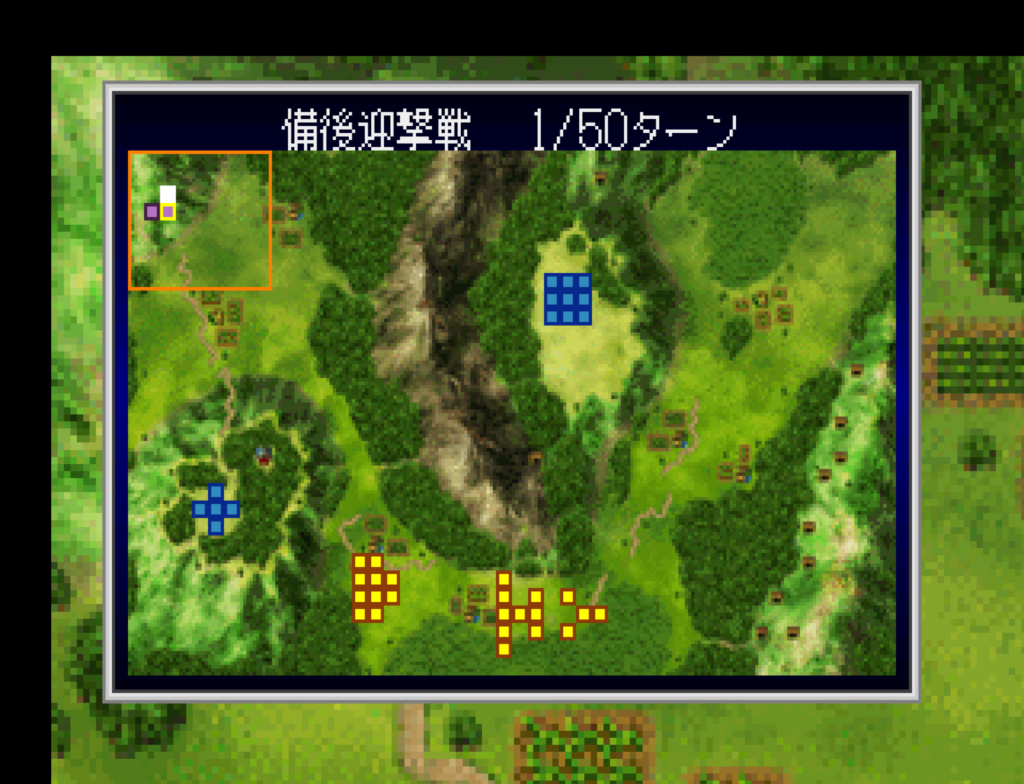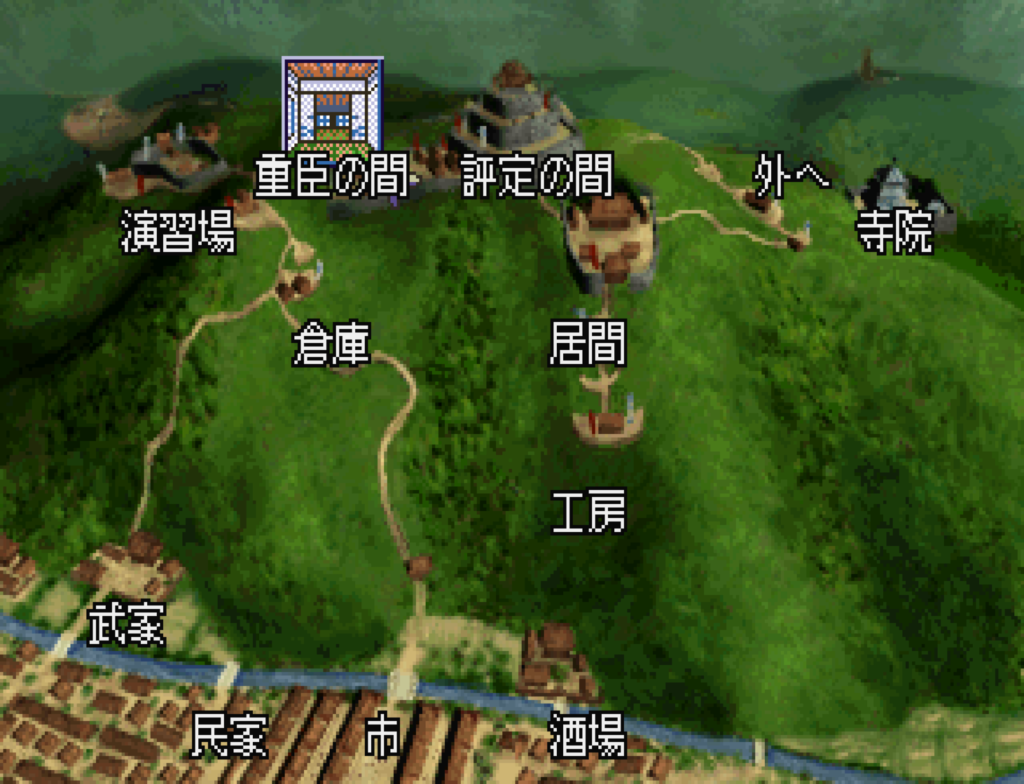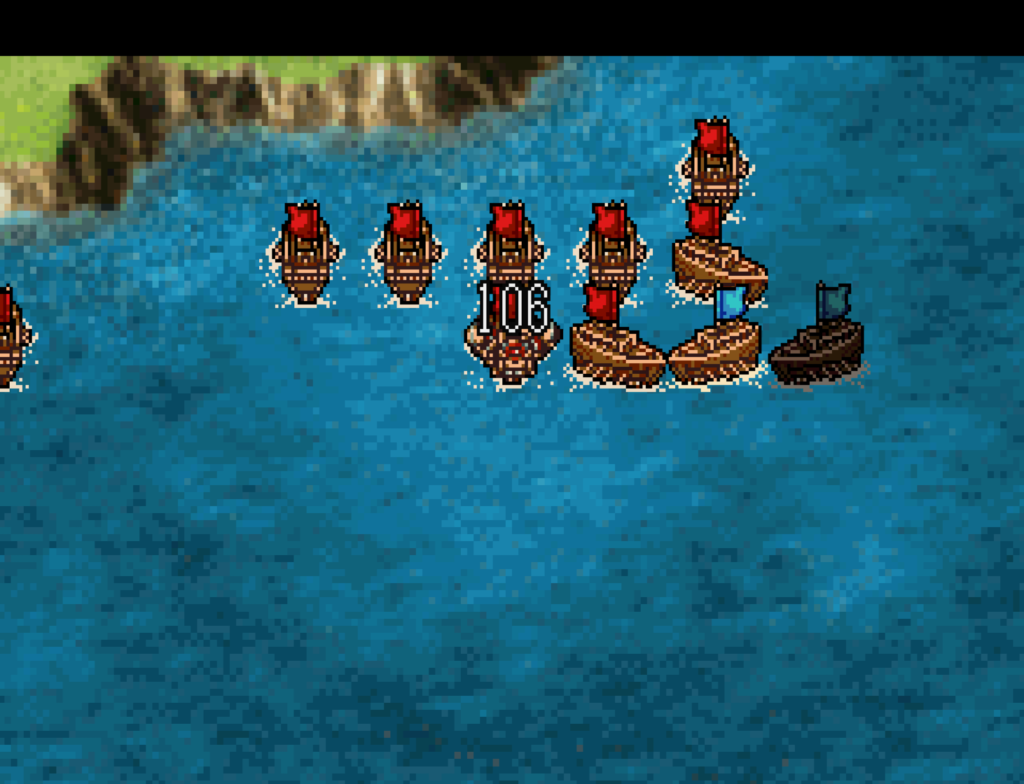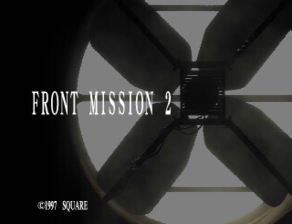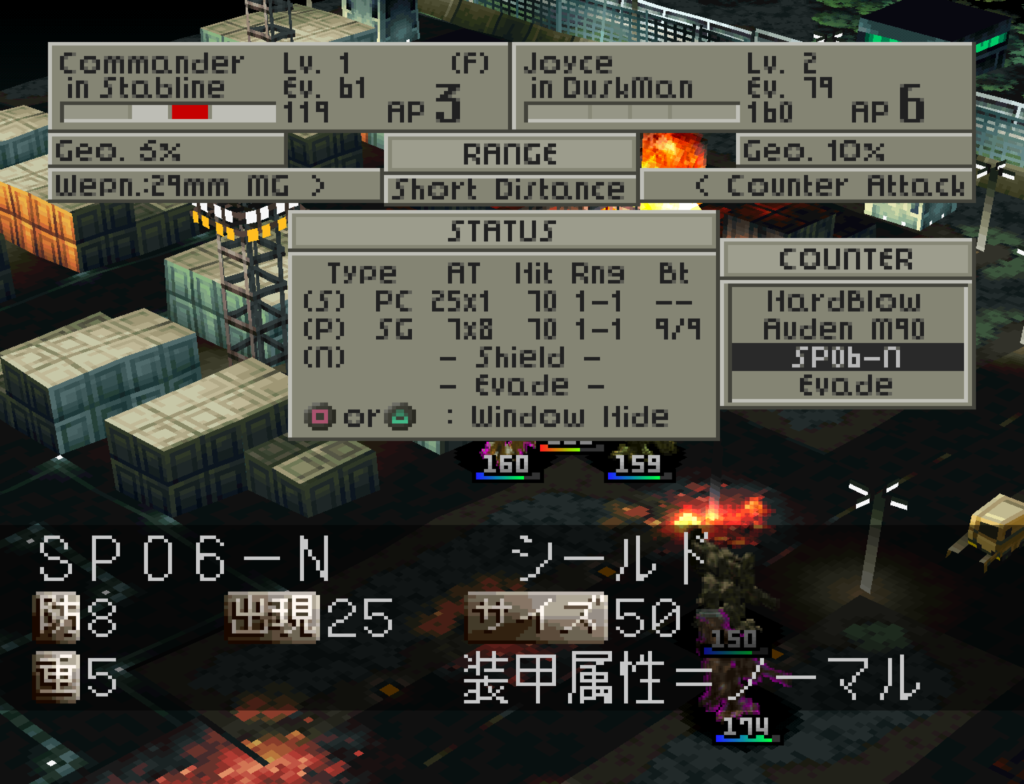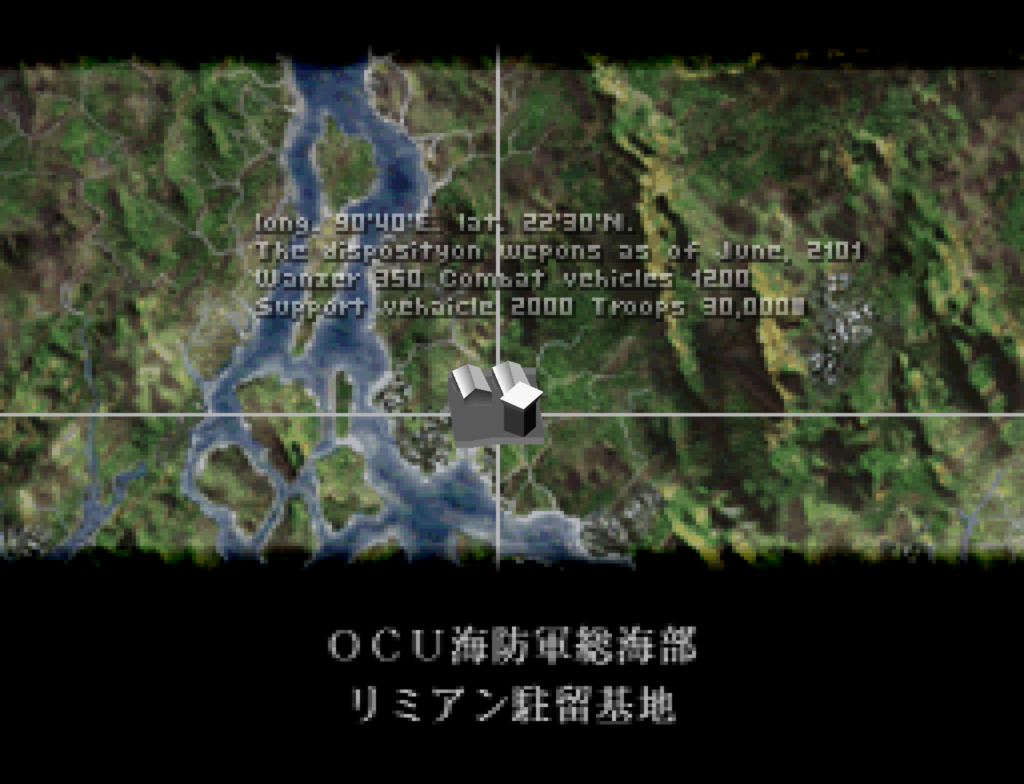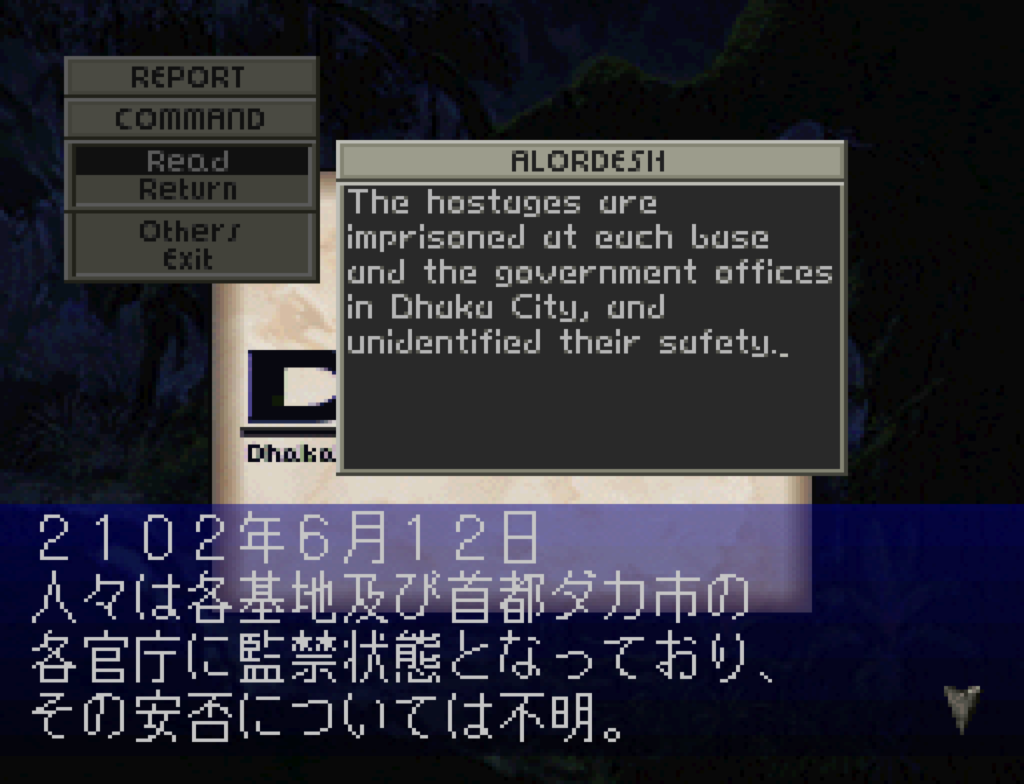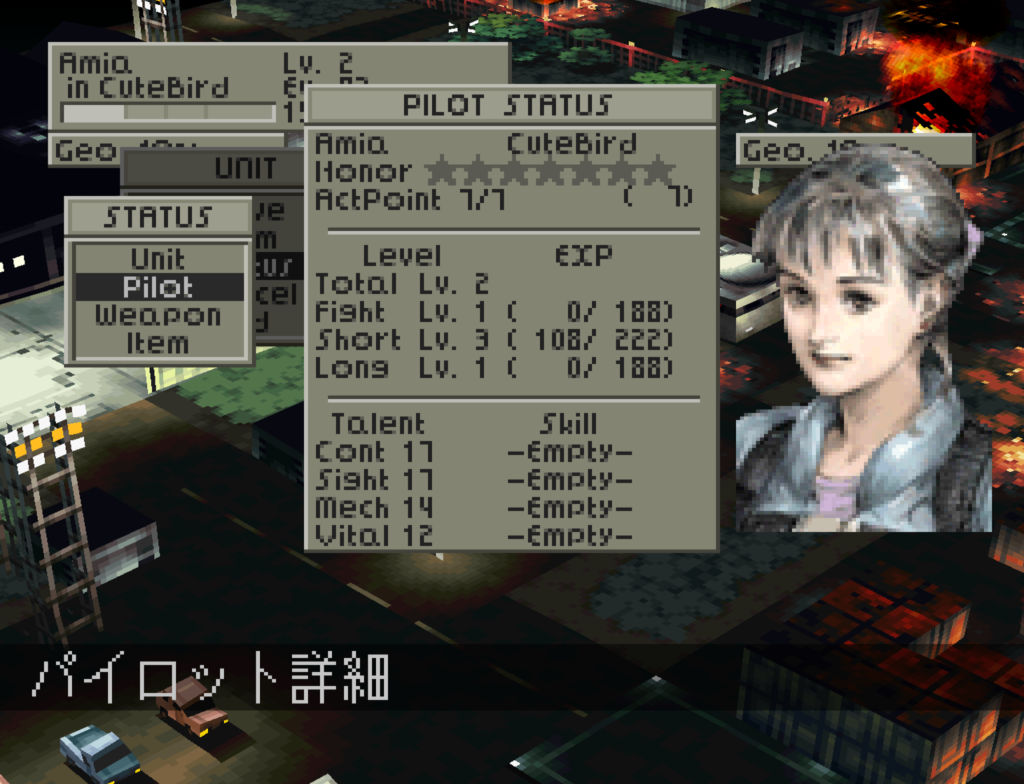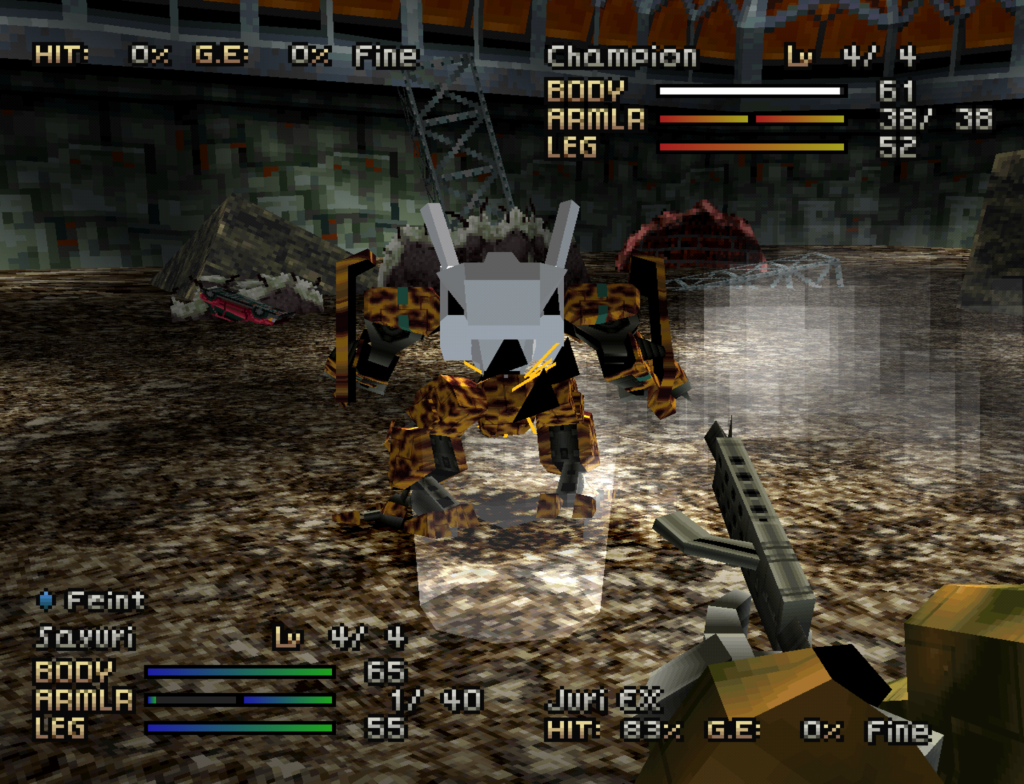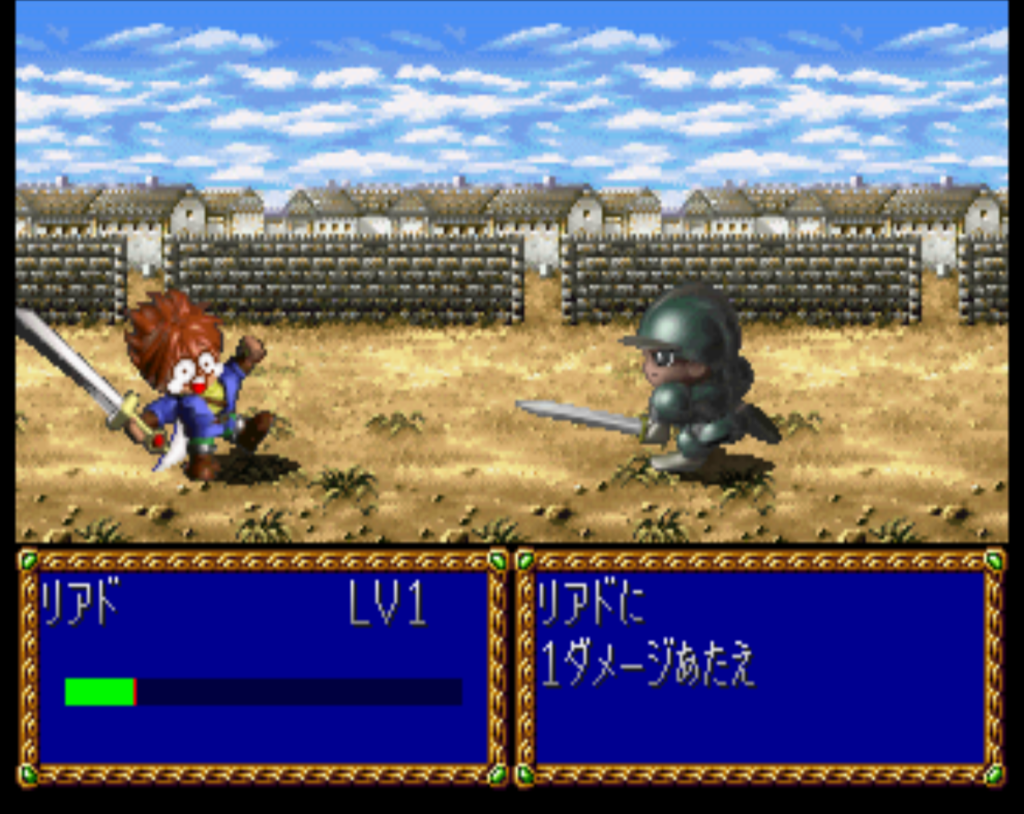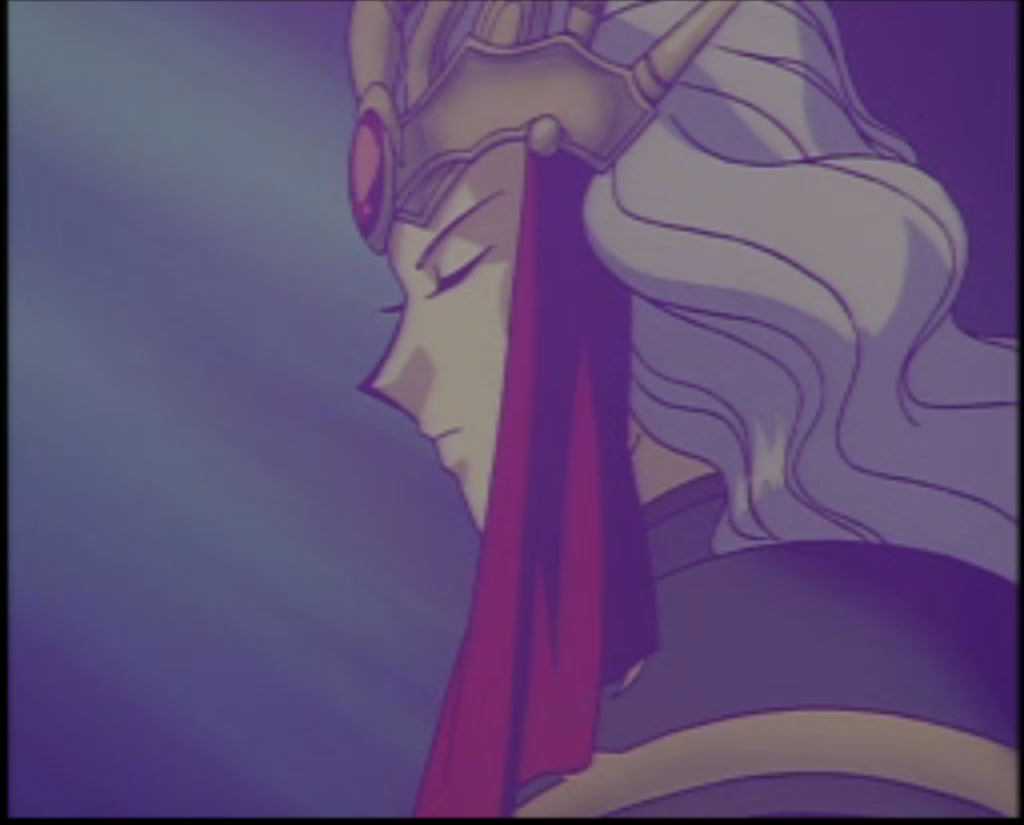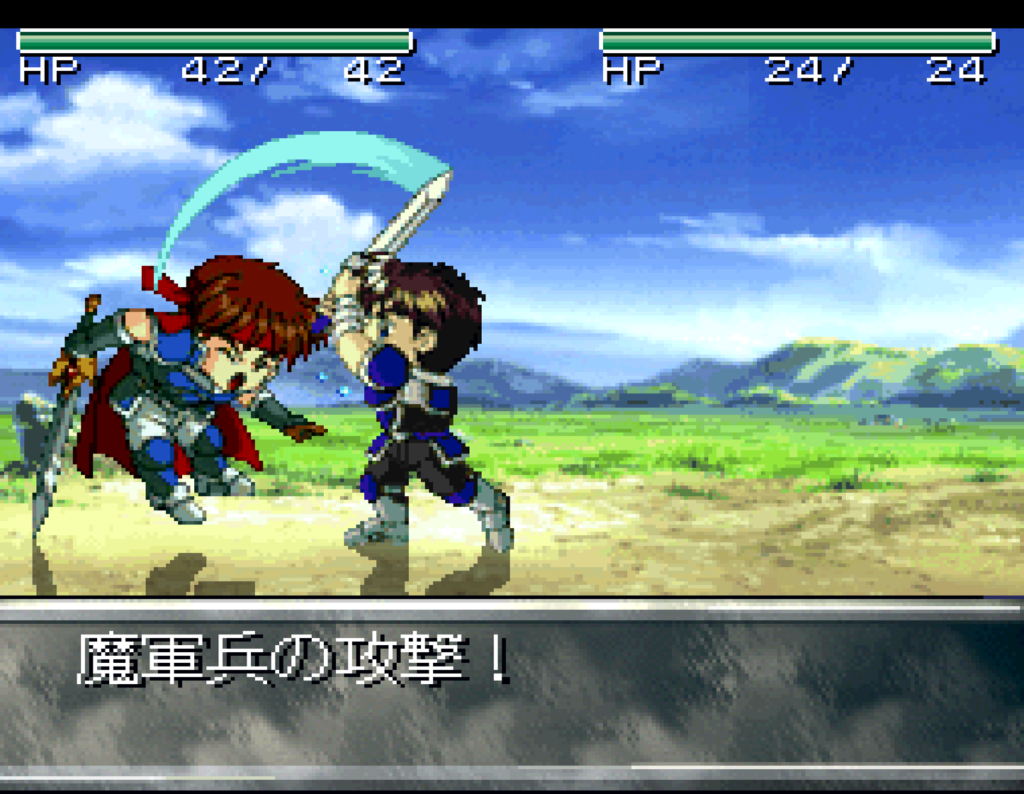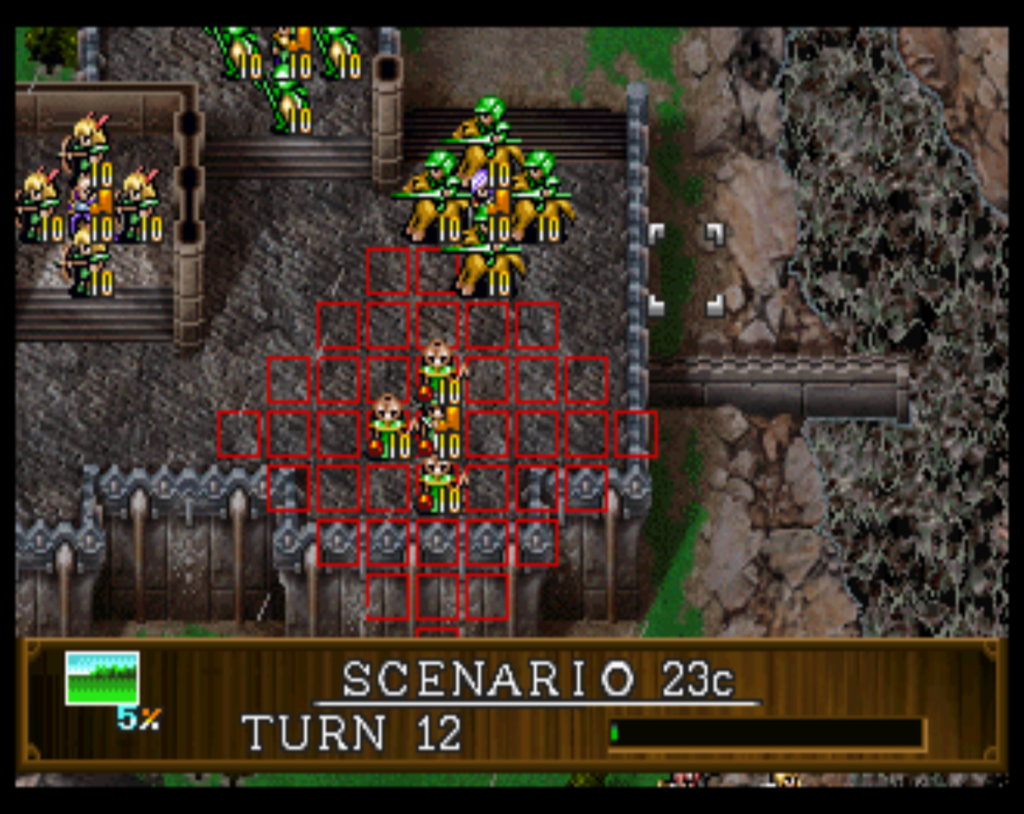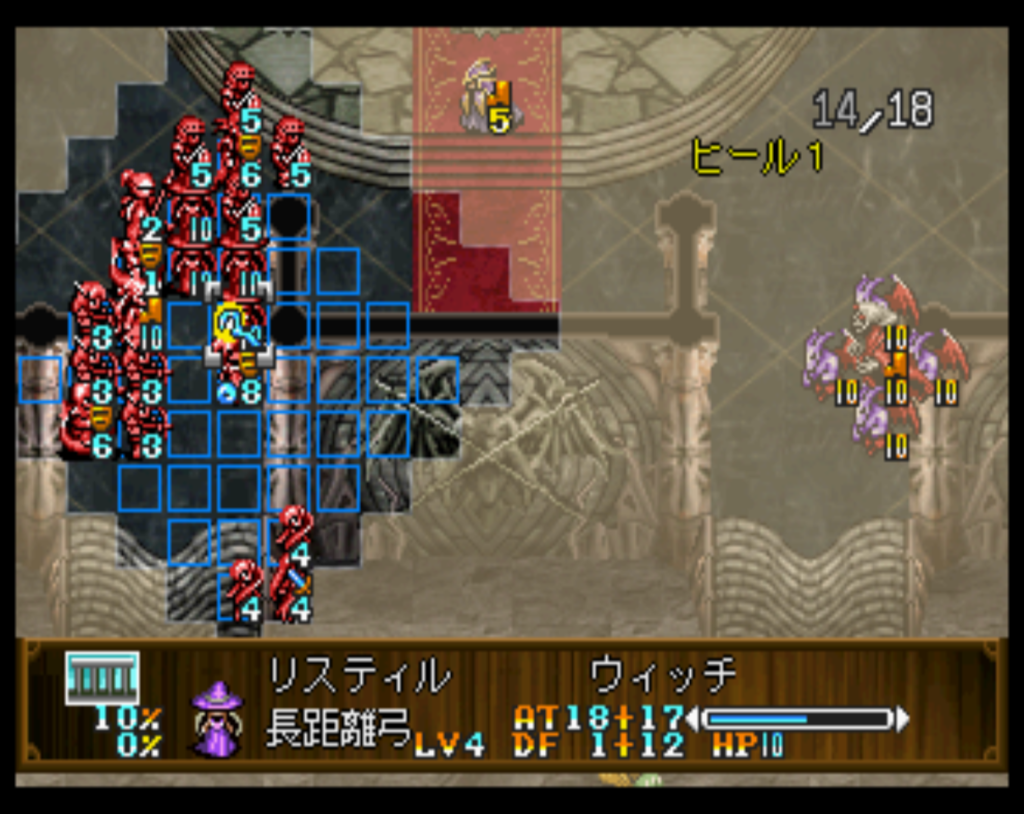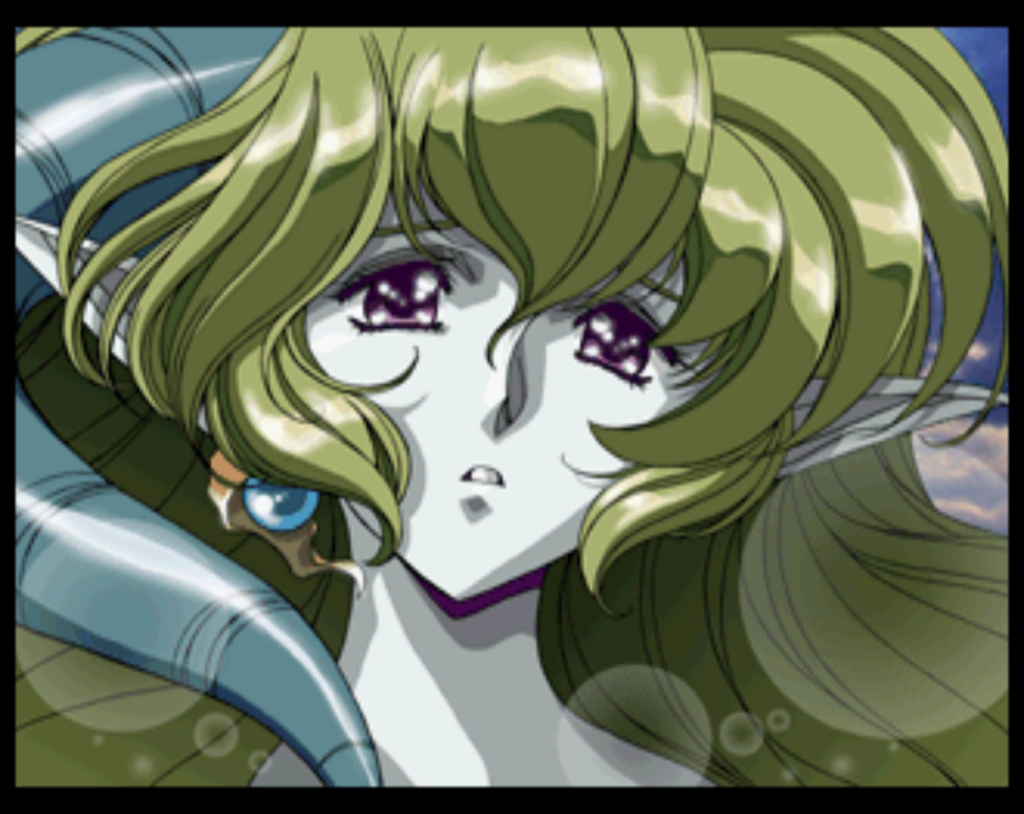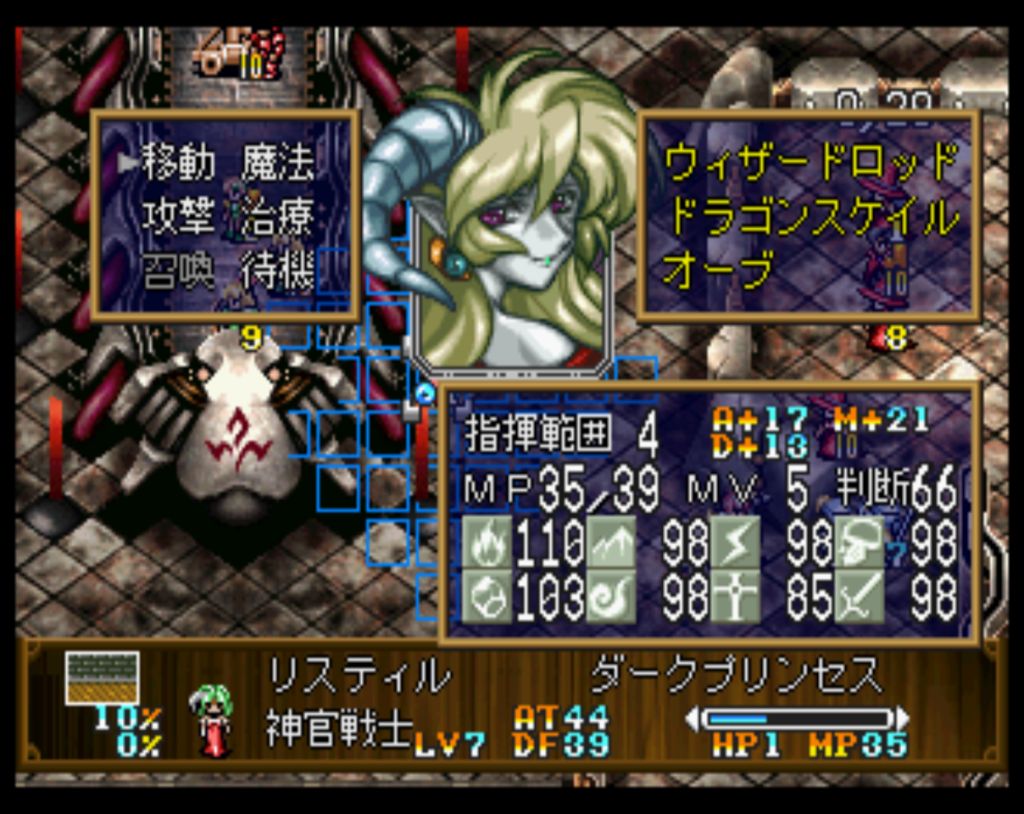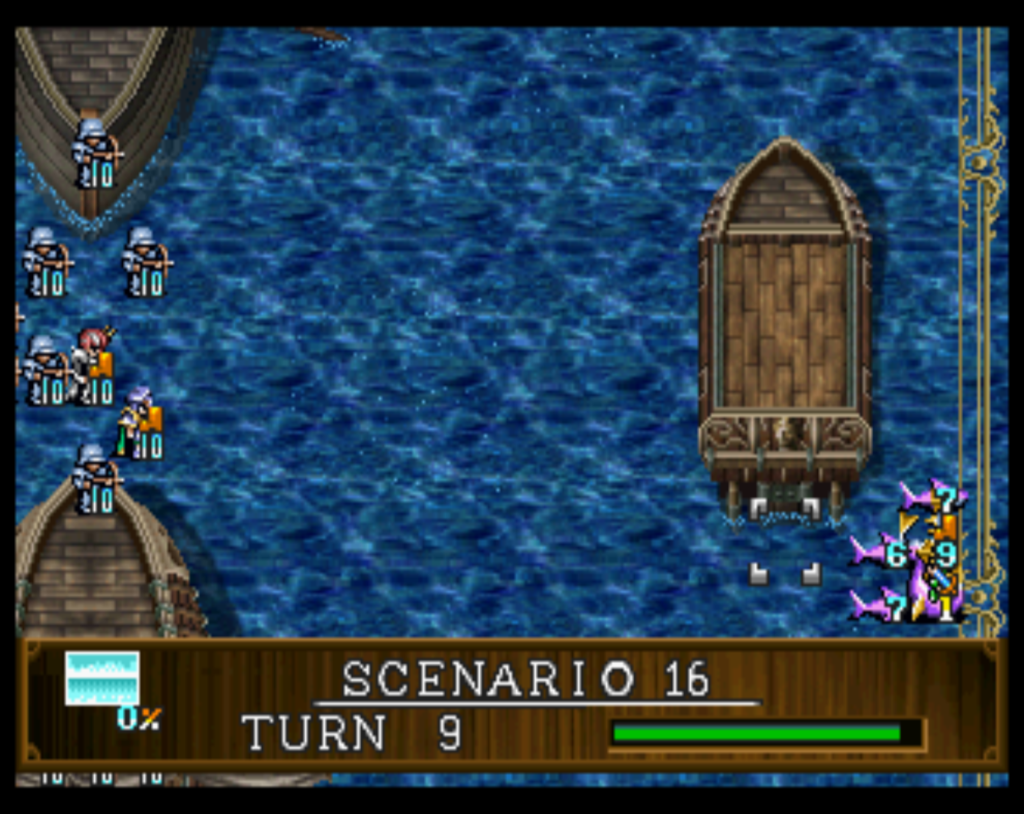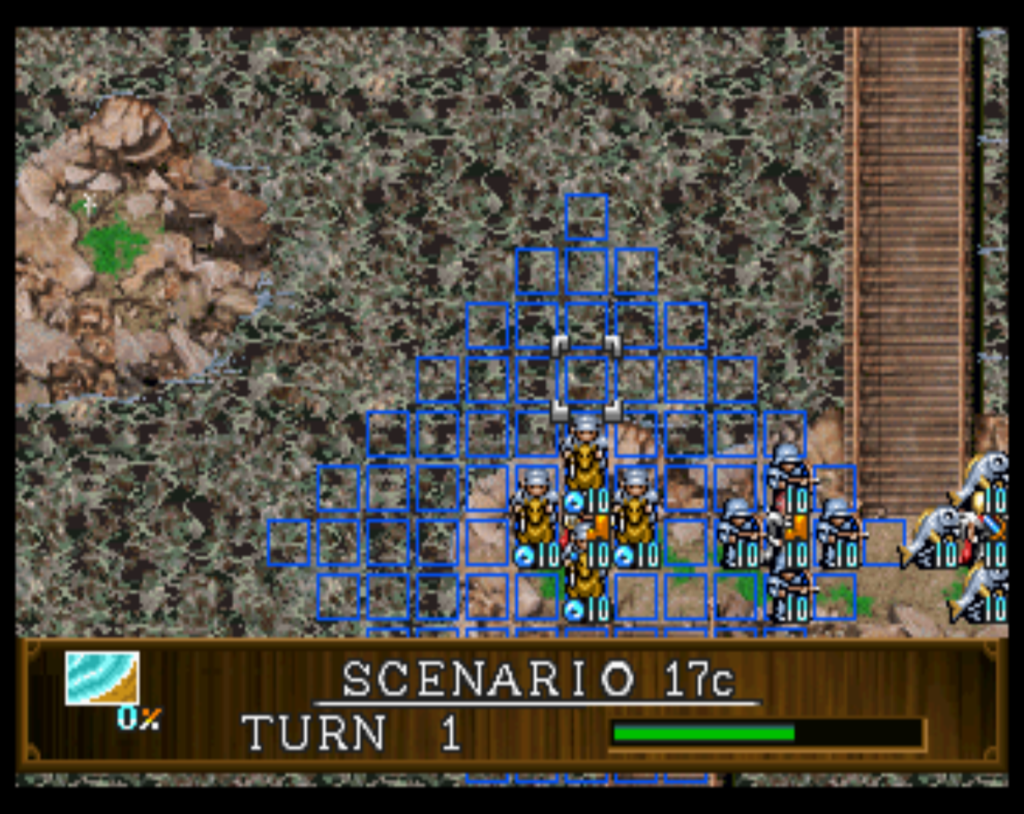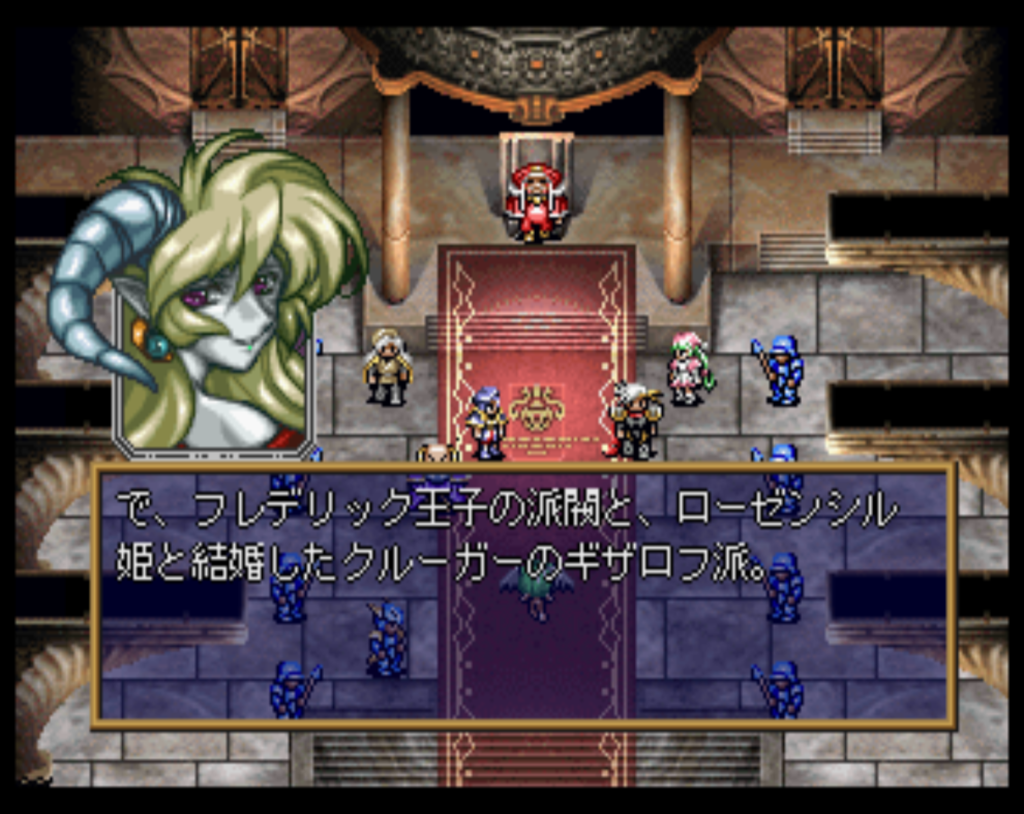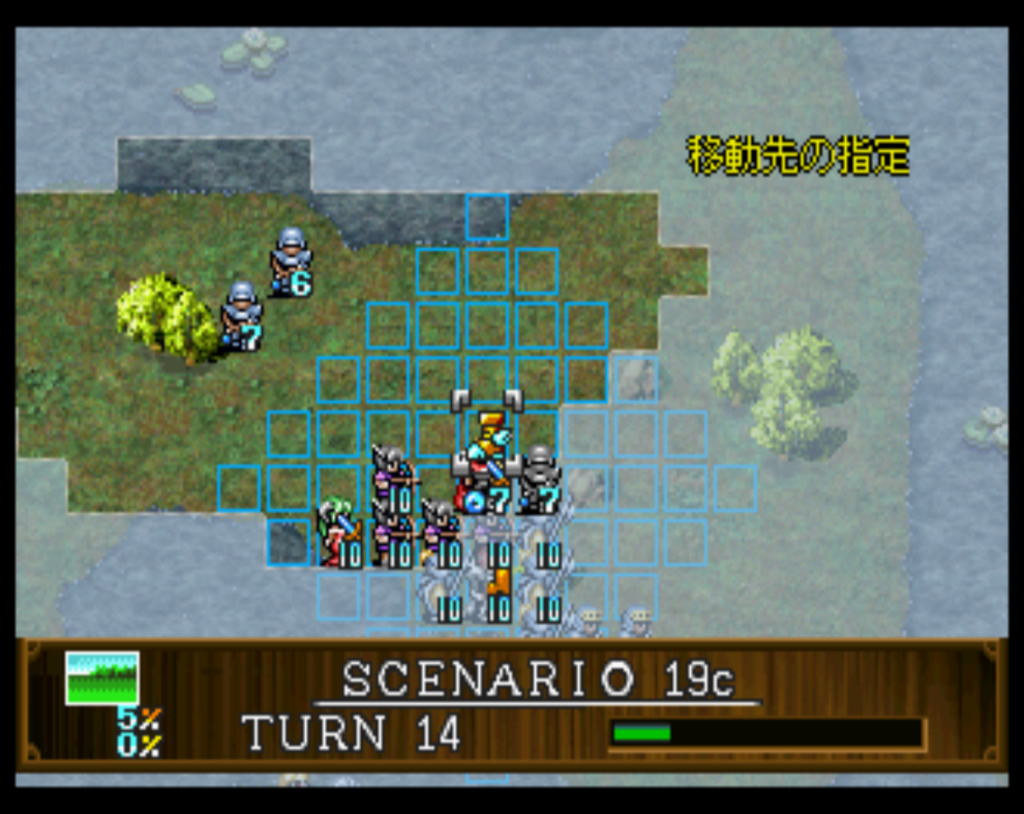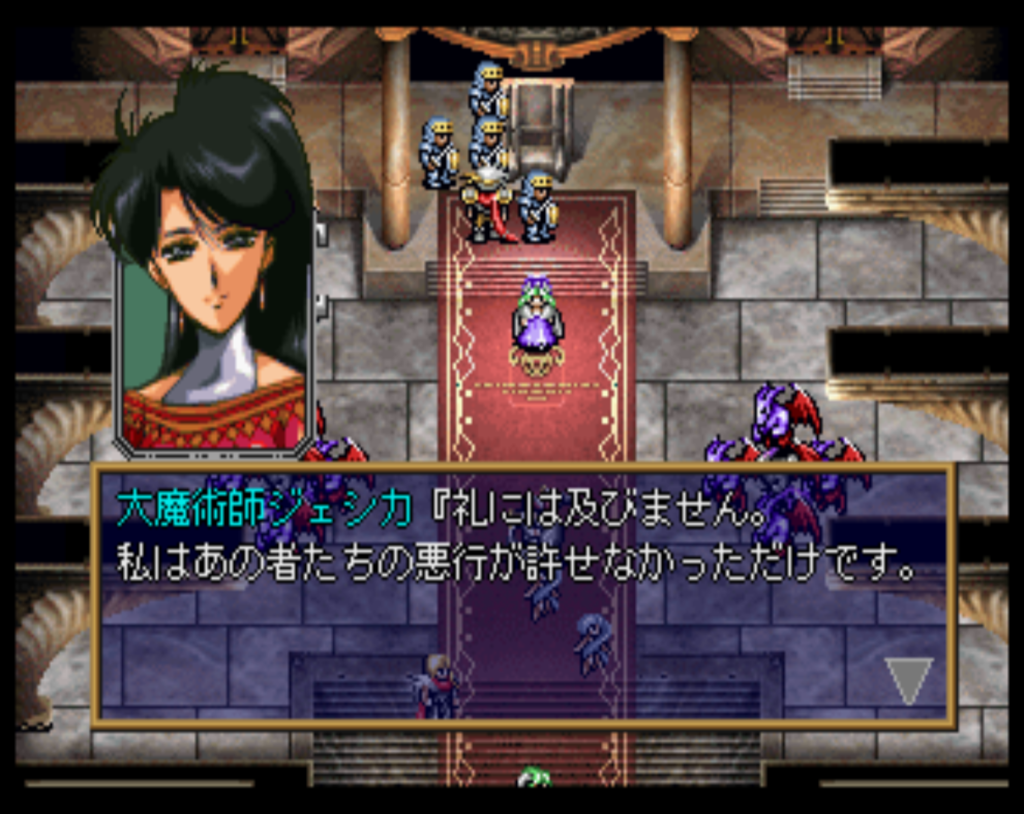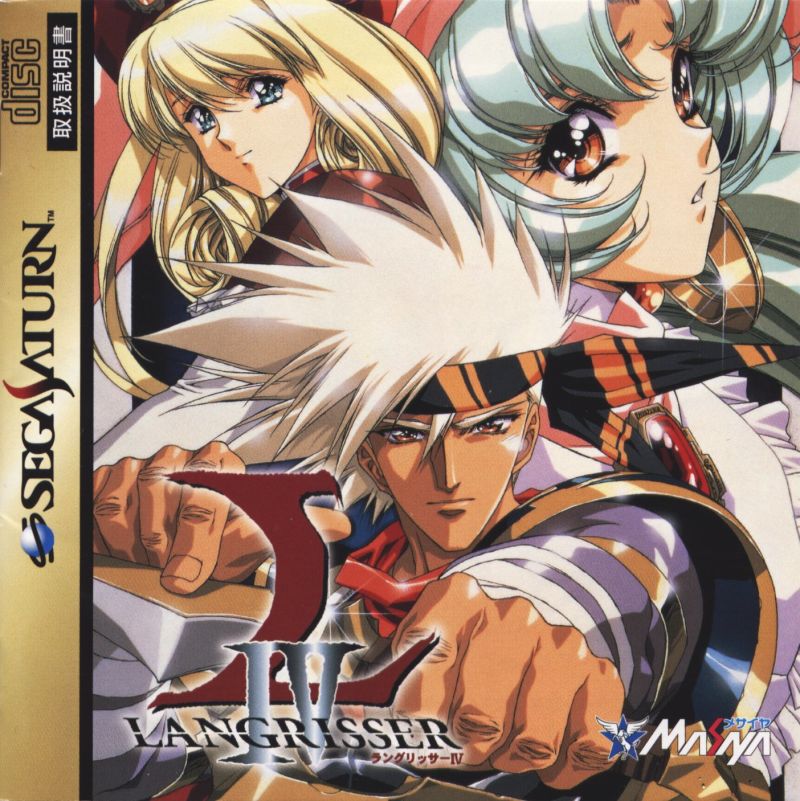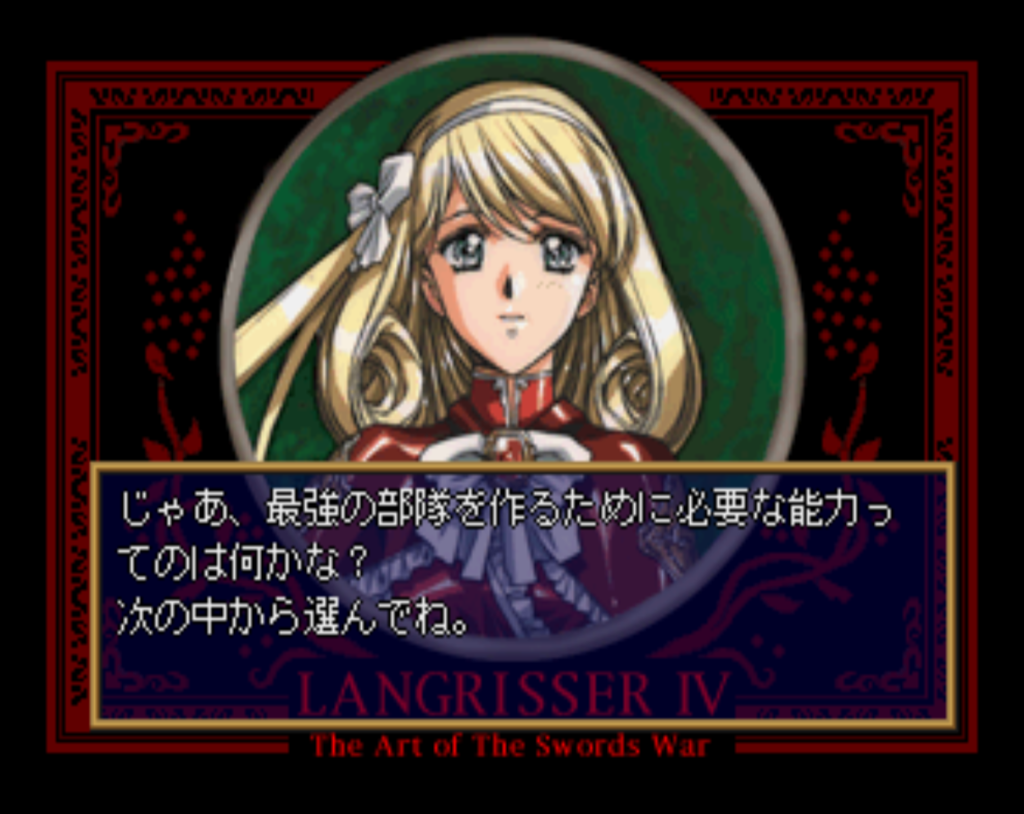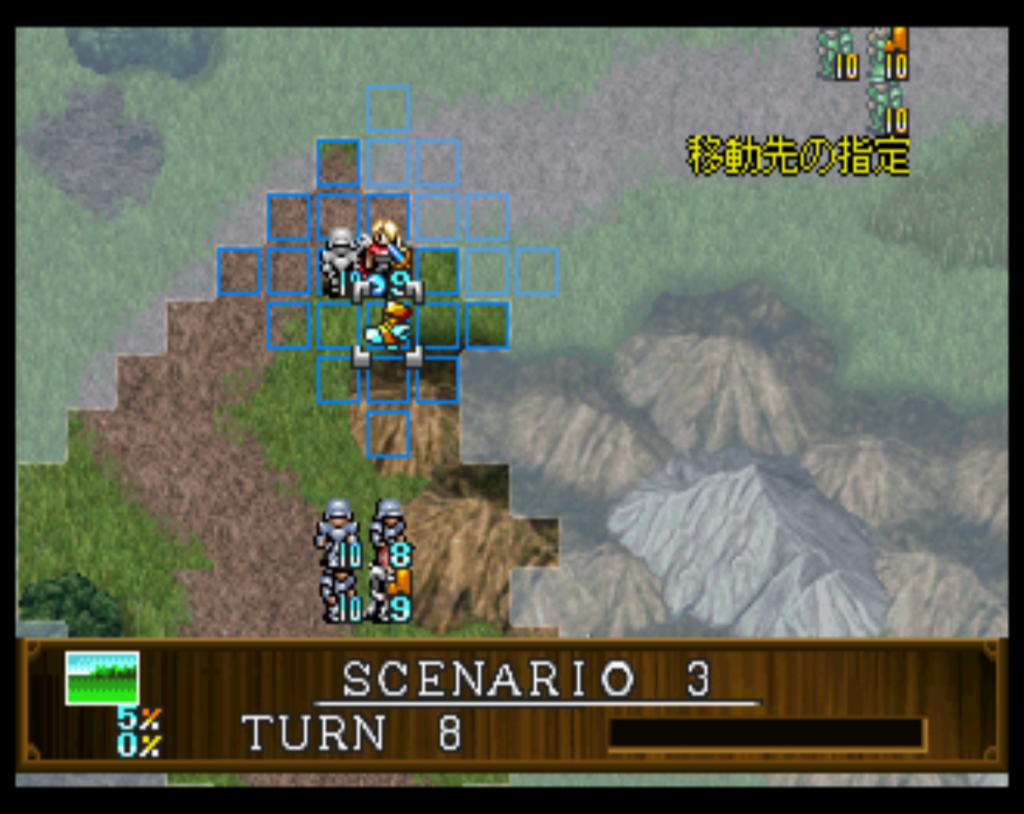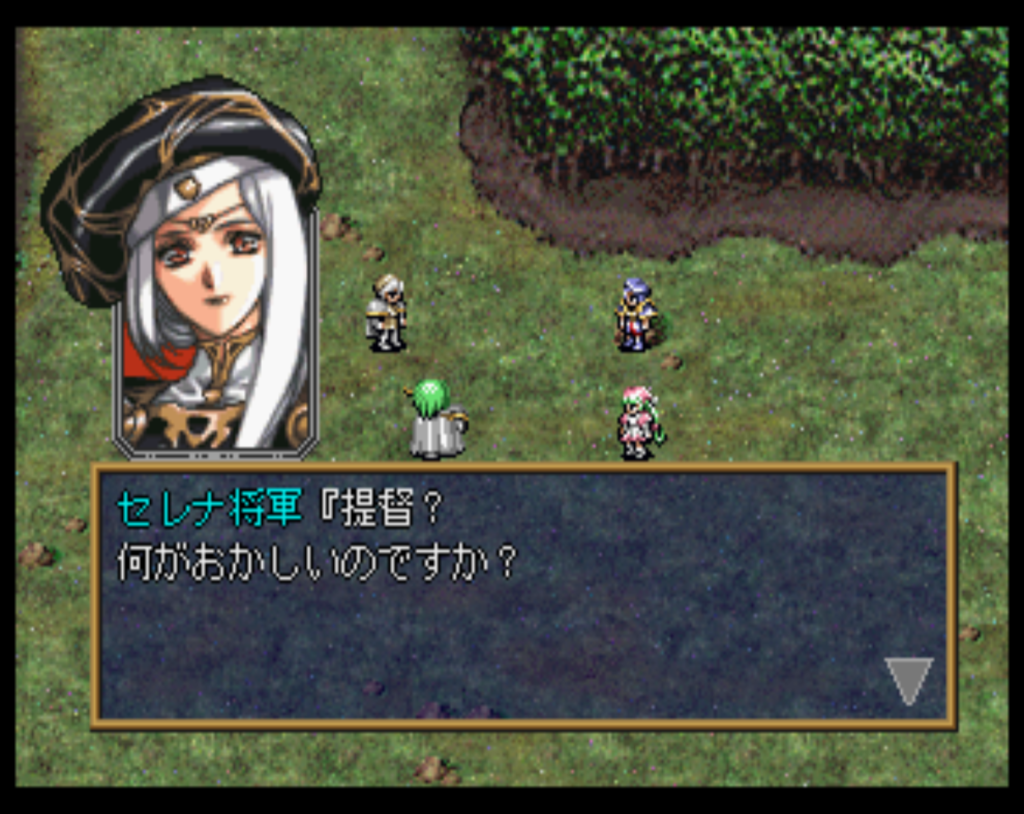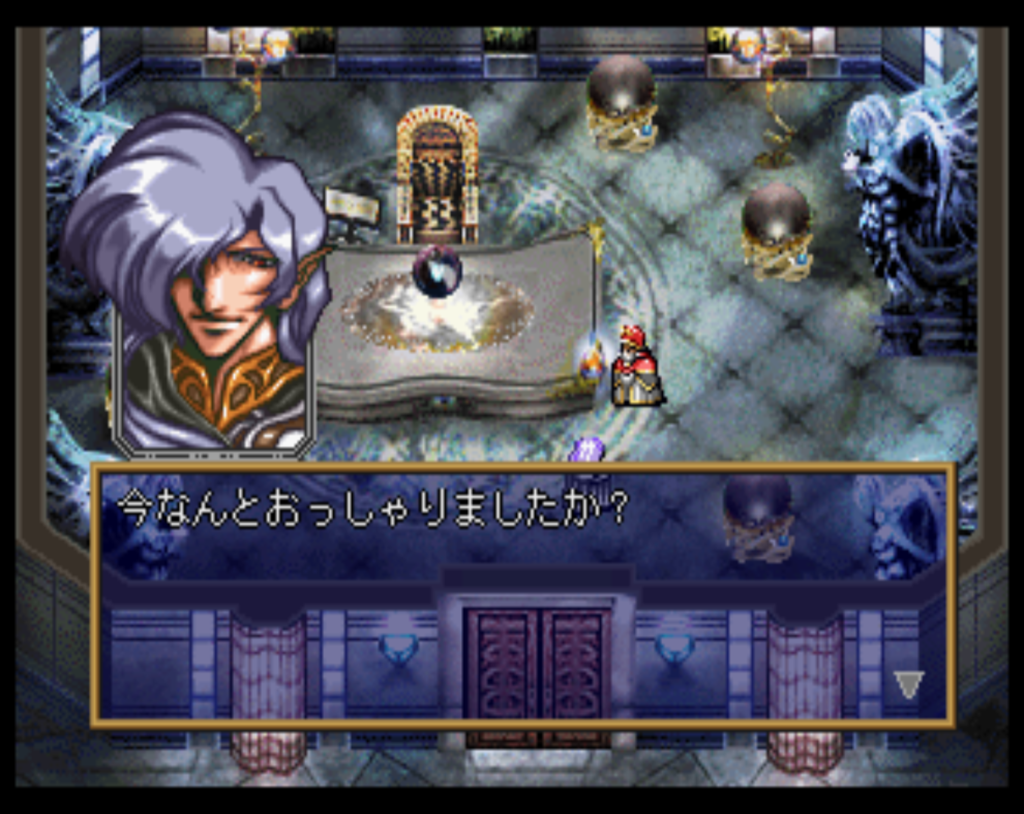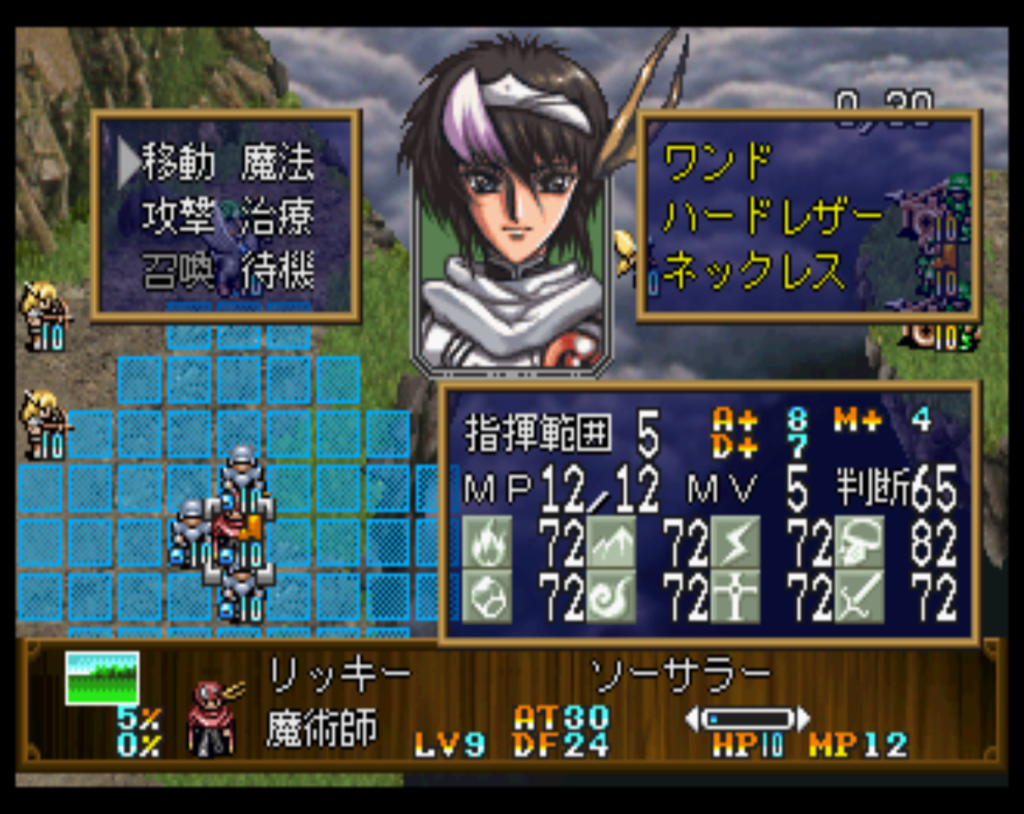Ronde (RONDE ~輪舞曲~), released 10/30/1997, developed by Atlas
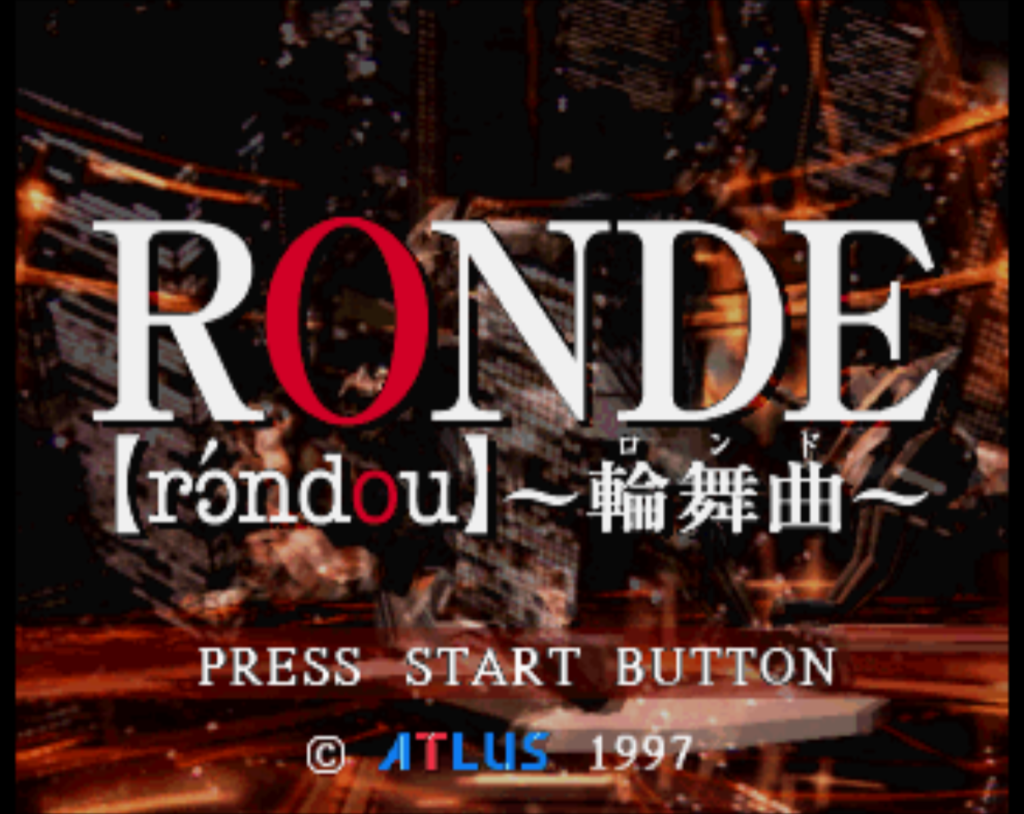
This is essentially the third Majin Tensei game, although Atlus chose not to label it as such, instead giving it a new title (although the series is mentioned in the instructions). I knew that it had a bad reputation, and unfortunately it’s well deserved. The first problem anyone will noticed is the graphics. The beautiful art of the demons from the first two games on the Super Famicom has been replaced with this:
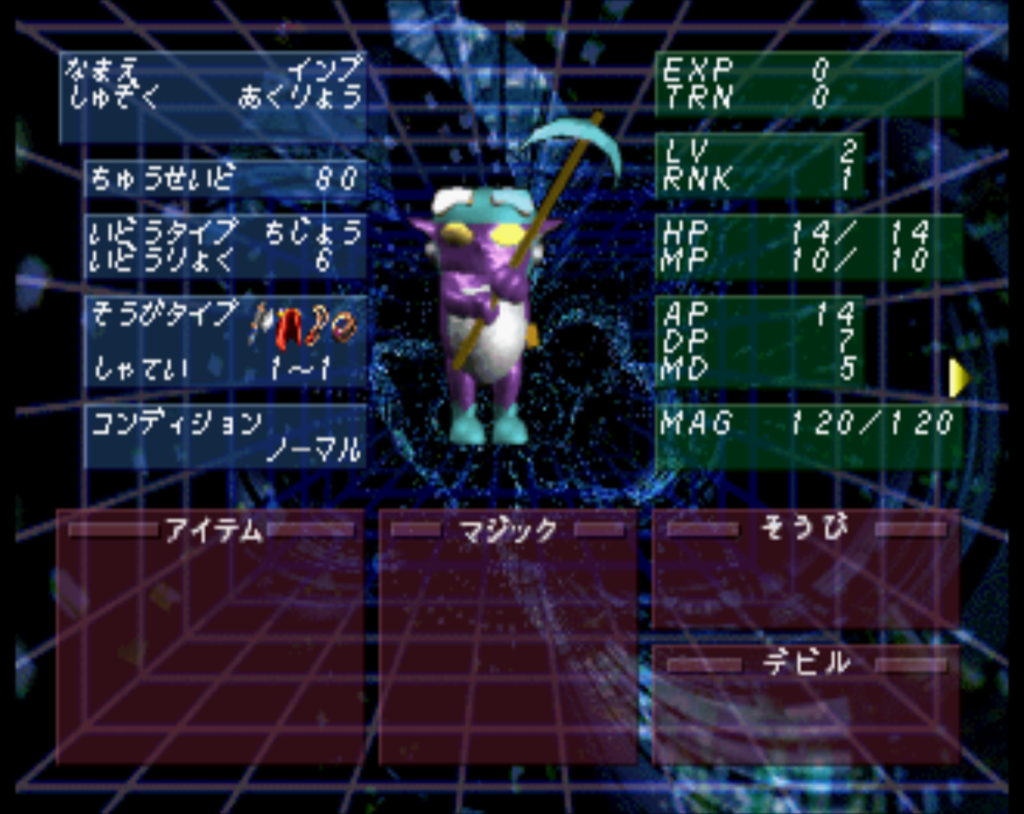
The characters and battle maps look like this:
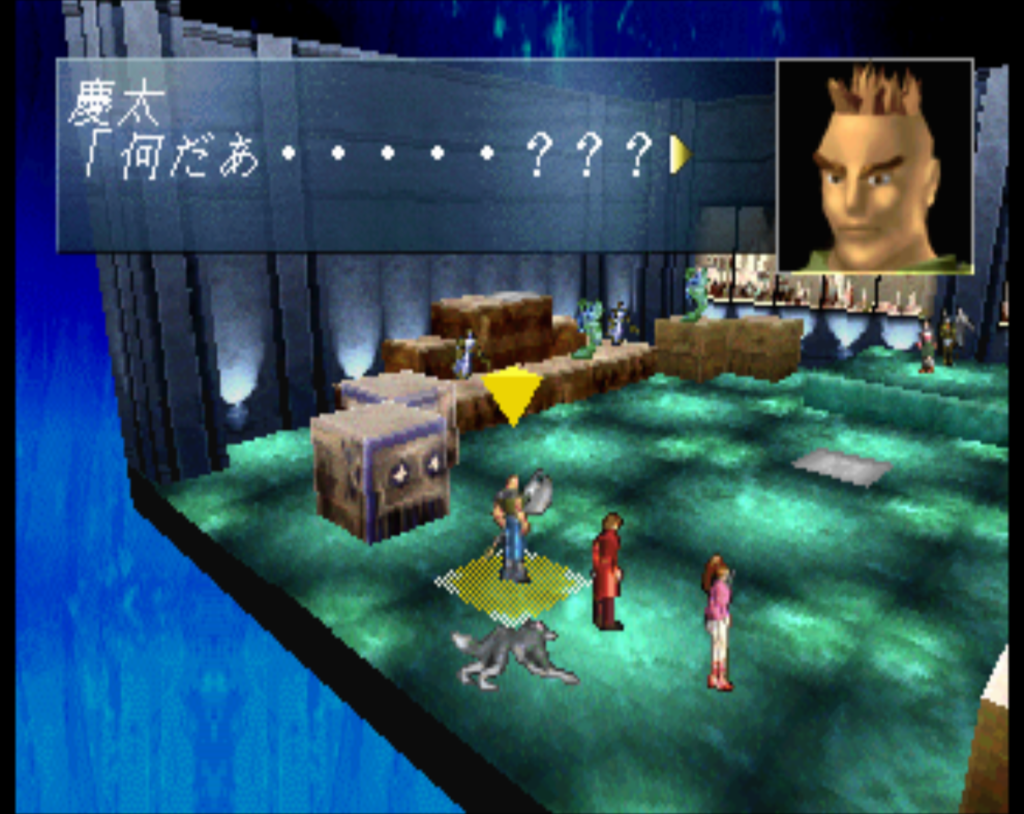
Early Saturn and PS1 attempts at 3D are rough in general, but this is among the worst I’ve seen. I don’t generally need excellent graphics for the game to be good, but these are even worse than you would expect.
The second big problem is the speed of the game; you can choose to disable animations but even so the enemy turns take a long time.
The third problem is that if any human character dies (including NPC) you get a game over. This is really the aspect of the game that made me decide to stop playing it; the majority of your team is humans, and it’s way too easy for the enemies to kill your guys.
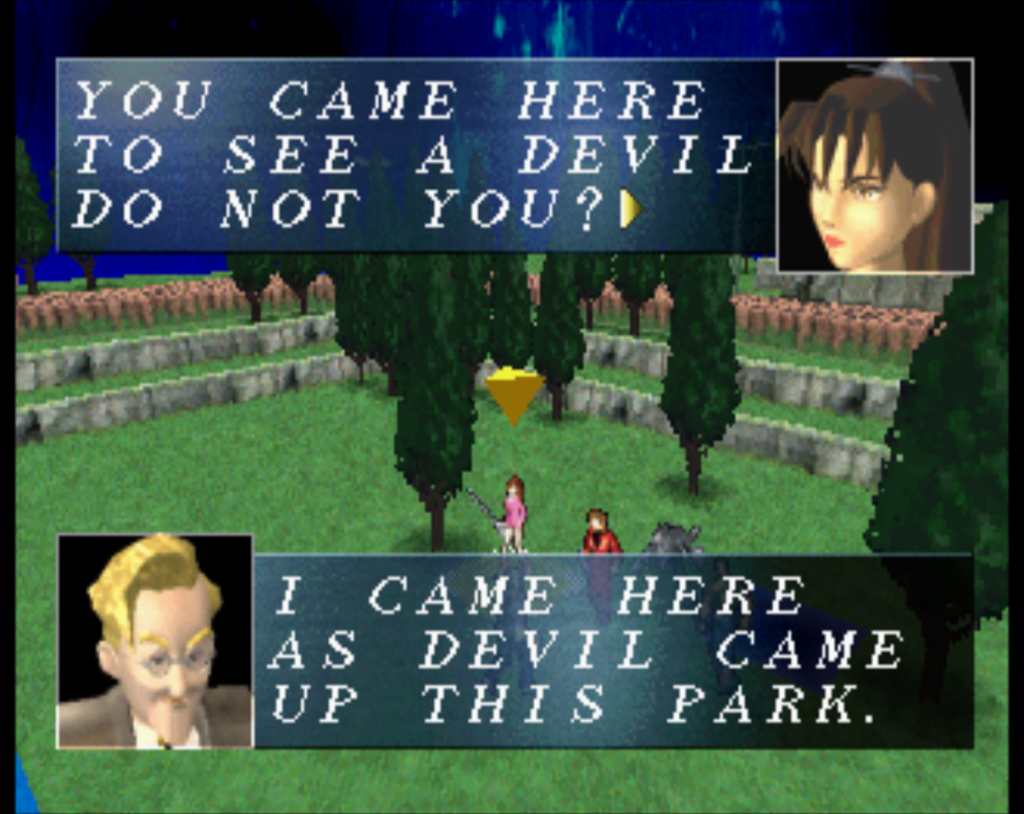
Finally, the interface is a pain to use in a number of ways. The worst issue is that you cannot trade items between characters outside of battle. You can only do it in battle, taking a full turn for each single item. And you can’t see who can equip what in battle, so equipment is a headache.
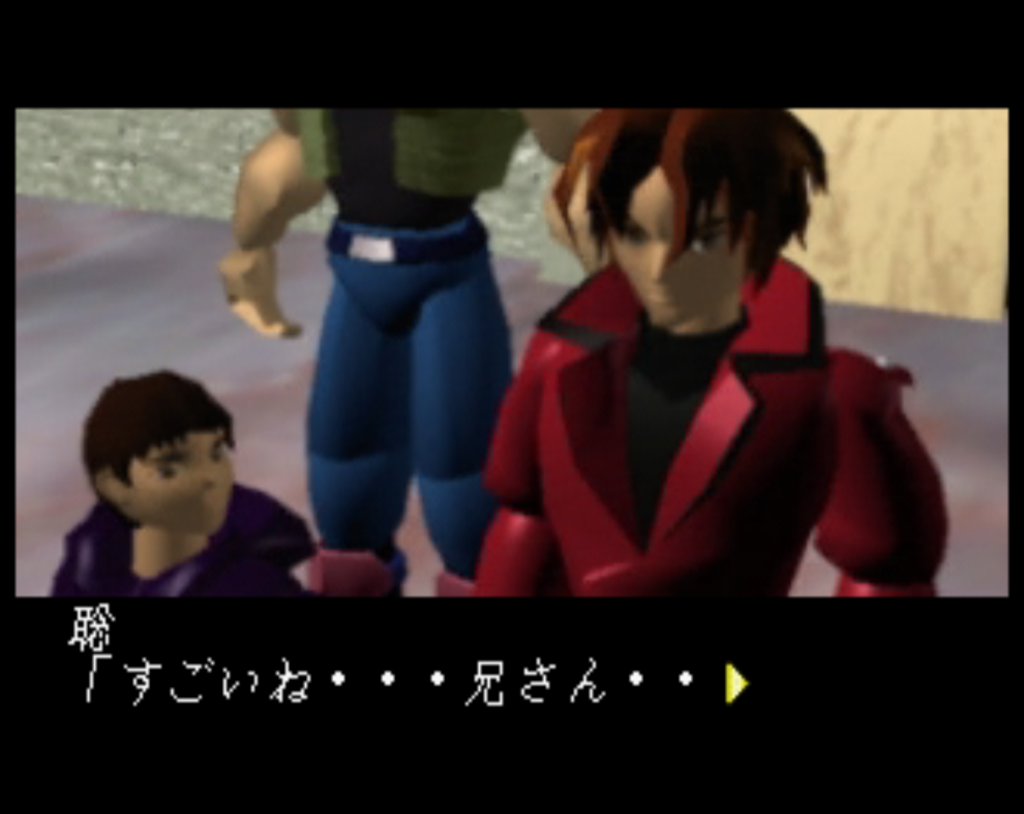
The reason the game is 2 discs is that all the story sequences are done like above, with the characters poorly animated for no real purpose.

The story seems decent. The first part starts with Molech coming to life from an ancient statue and capturing Asuka (main character)’s younger brother, Satoshi. His friends Sakurako and Keita are there too, and they start fighting the demons, which as usual have overrun Tokyo. This seems to be due to data research being done by a scientists called Thompson.
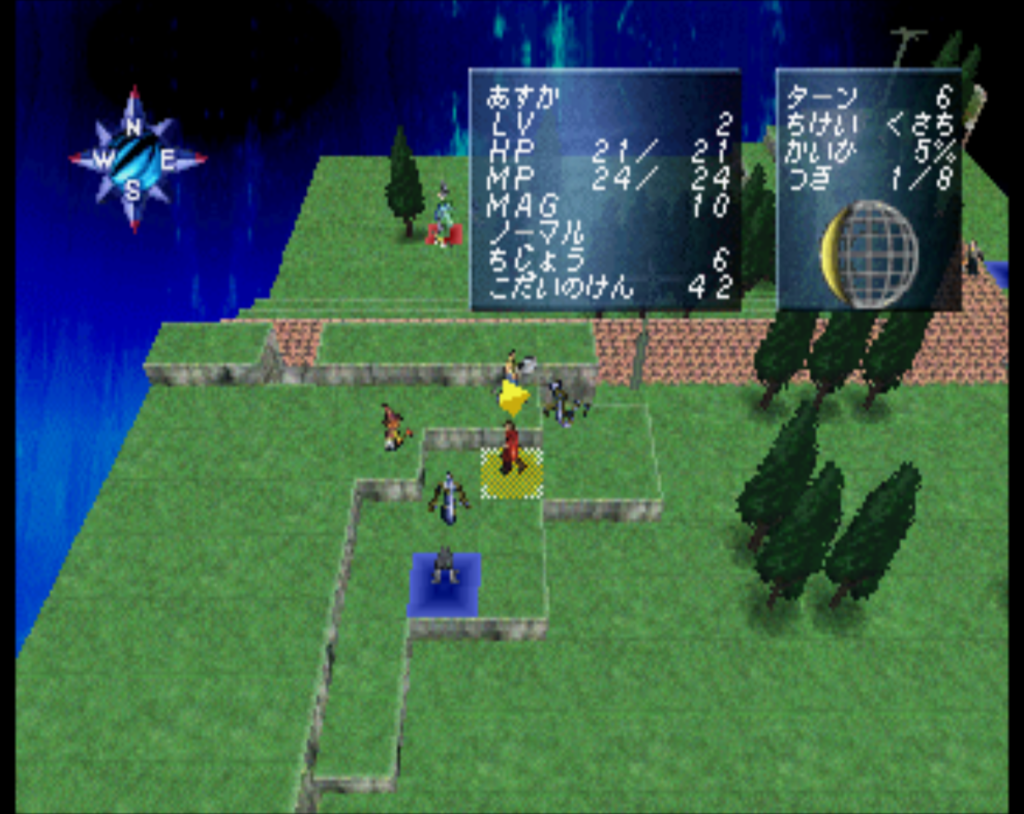
The system is fairly standard as far as the battles go. It’s player phase-enemy phase. There are healing spots on the map that you have to capture and turn blue (like Funky Fantasy); I wasn’t entirely clear on what the purpose of taking them over was other than to heal HP, but maybe it has some other effect.
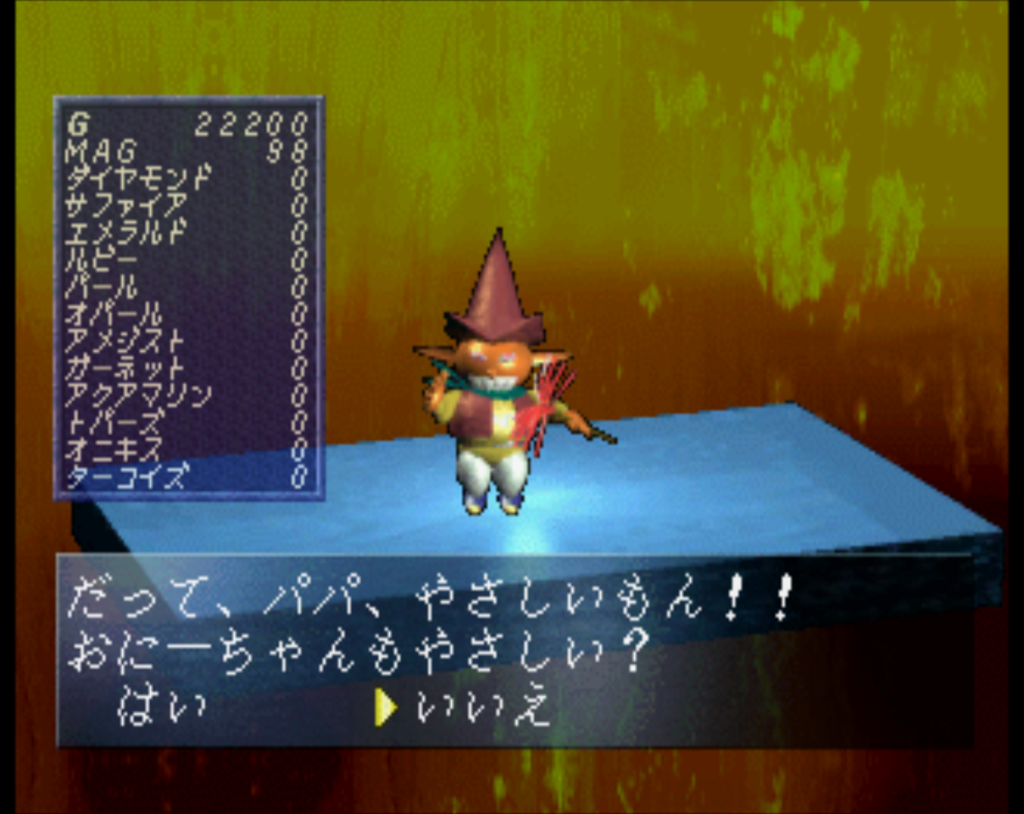
What is different is the monster recruitment. Instead of a talk feature, sometimes when you defeat monsters you’ll be given the conversation with them. Depending on what you pick they might join, or give you items, or such. But this is rather limiting, especially in the number of chances you have to get anyone on your team. It also means that if you start combining monsters you could run out.
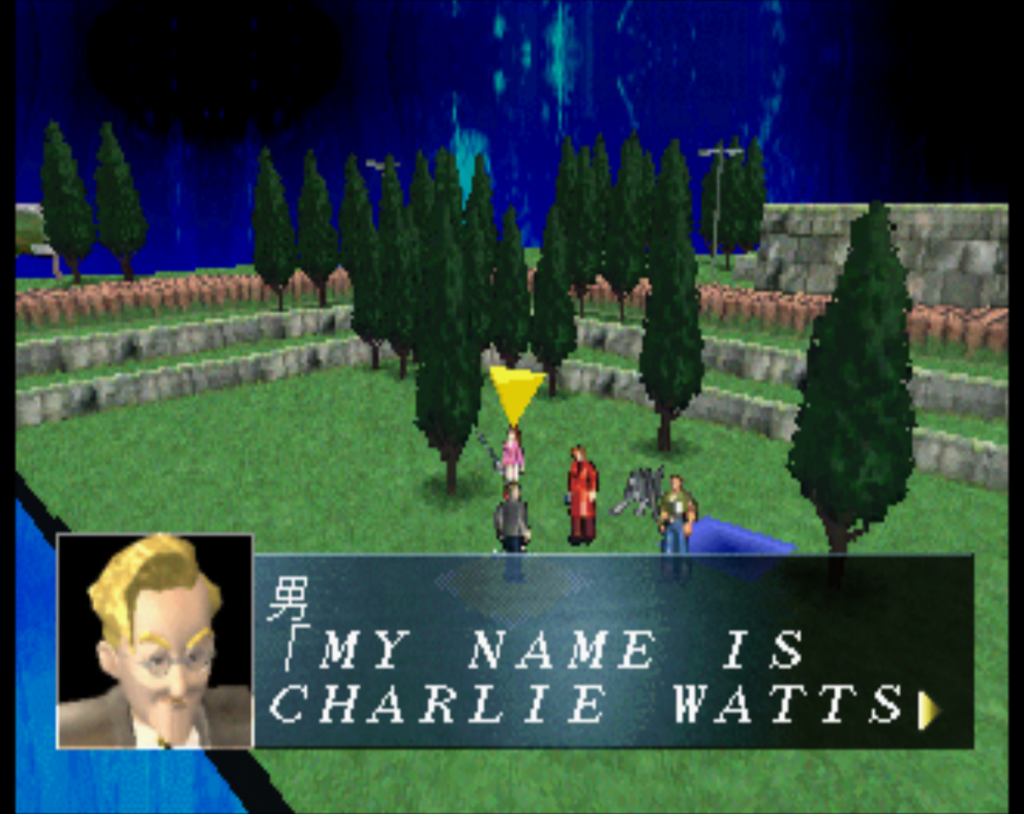
The monsters you recruit can be used in several ways. You can turn them into items/equipment. You can “contract” with them to use spells; this is the way that some of the characters can get magic. If you have them for a while and get their trust level up enough, you can make them units that can be dispatched on the battlefield. This is an interesting aspect to the system but the interface isn’t great.
In the second stage we head to Yoyogi Park where we hear demons have attacked too; the hope is that they’ll tell us where Satoshi is. Charlie, who is descended from Druids, shows up and teaches us about being “conductors” (which gives the ability to use the demons).
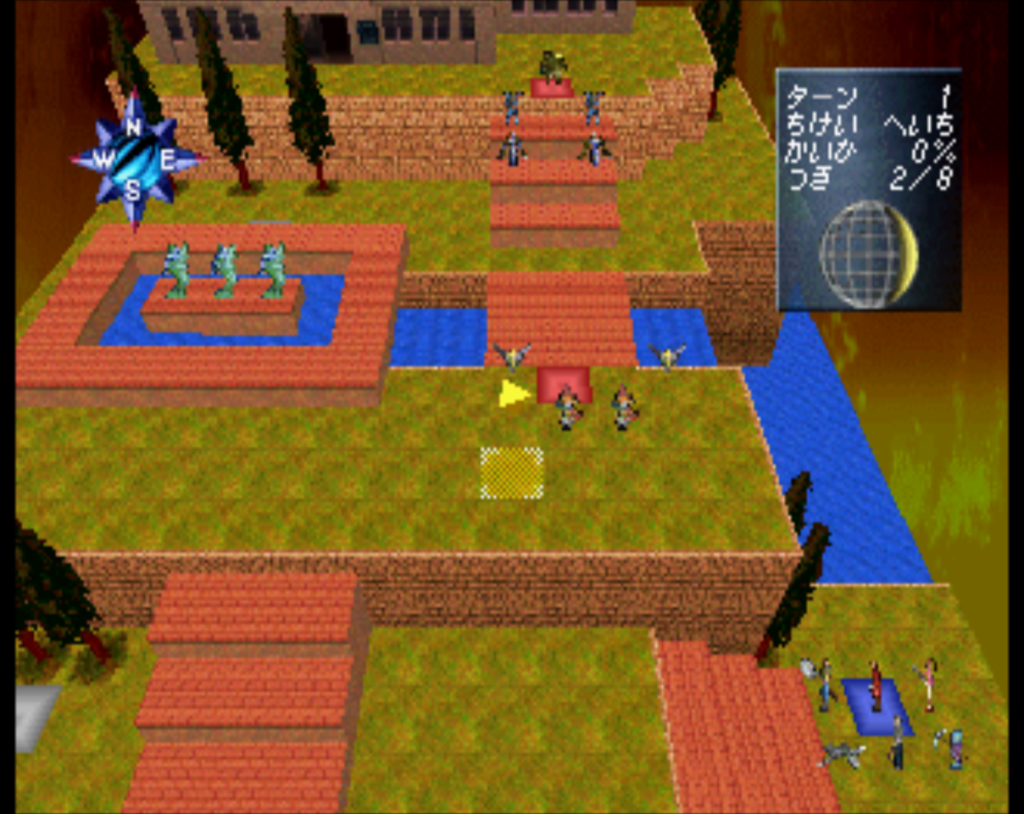
In the third stage we meet Azael, who demands that we return Lilim — obviously we have no idea what he’s talking about, but it seems like the demons aren’t all on one side; they fight each other to help their reincarnations some how. Once we beat Azael up he joins the team. There’s also a lab here; it’s empty but clearly it has something to do with the demons and there is a transmission coming in.

In Shinjuku, motorcyle gangs have taken over and are threatening our next party member Reika. Fortunately she doesn’t move, and neither do many of the enemies until you get near them.
I apparently didn’t take any screenshots after this. In Stage 5 we find out where the computer transmissions are coming from, and using that computer we go inside to another world, where we beat up demons. Willy and Maria from the American armed forces are there as well, as is a mysterious guy named Sawamoto who gives us a disc that Thompson was using in the hopes we can use it to figure out what’s going on. Afterwards it seems that the mass media has painted our characters as the villains that have brought demons to Japan.
The story is not bad, but the game is just too much of a pain to play to experience the whole thing. It’s too bad because Majin Tensei was a good series and as far as I know this was the last one.
